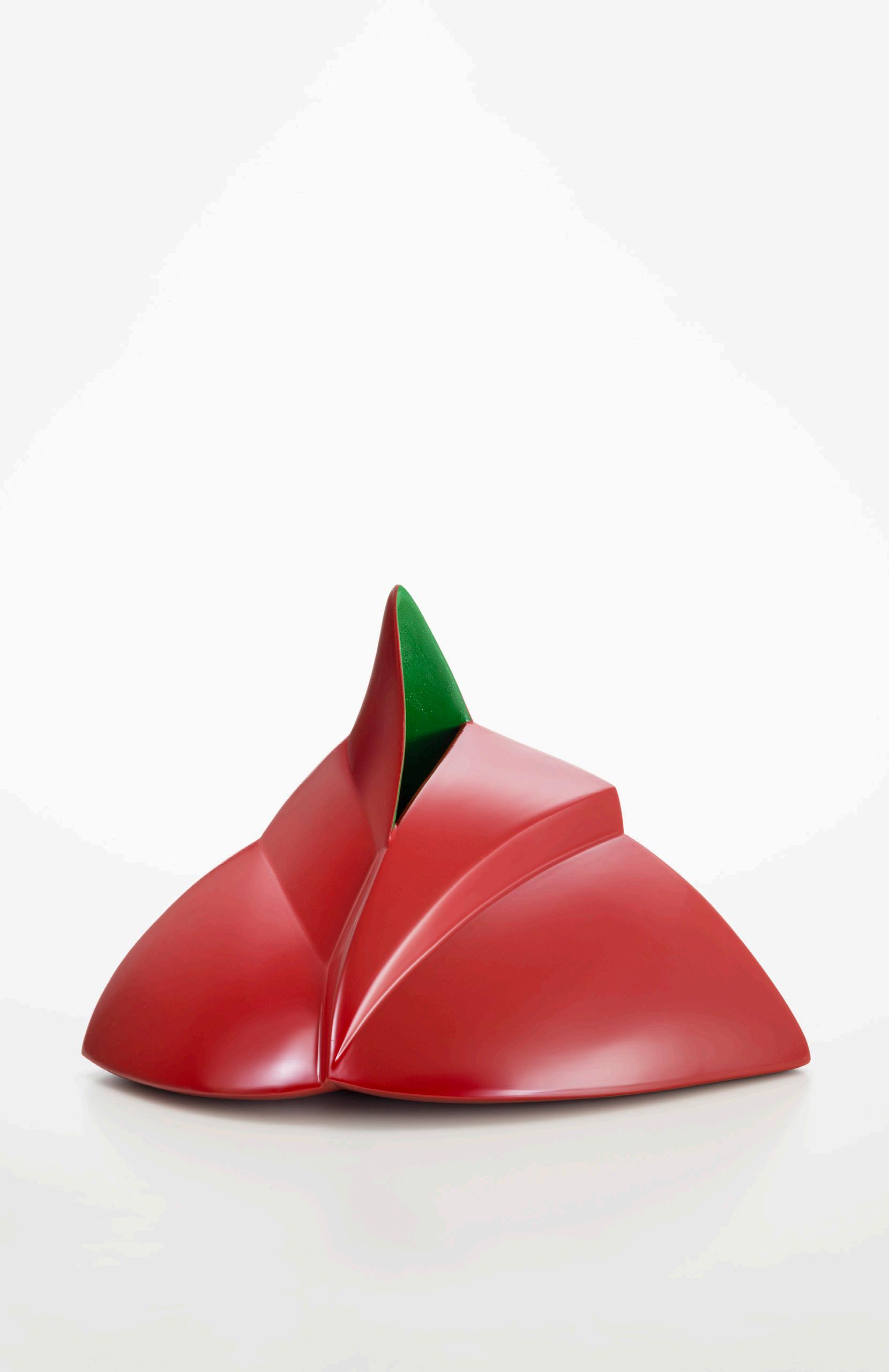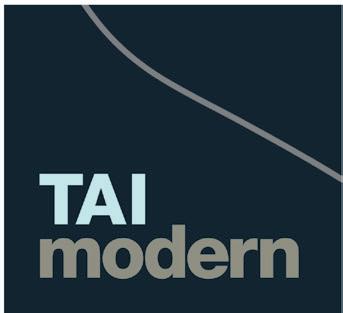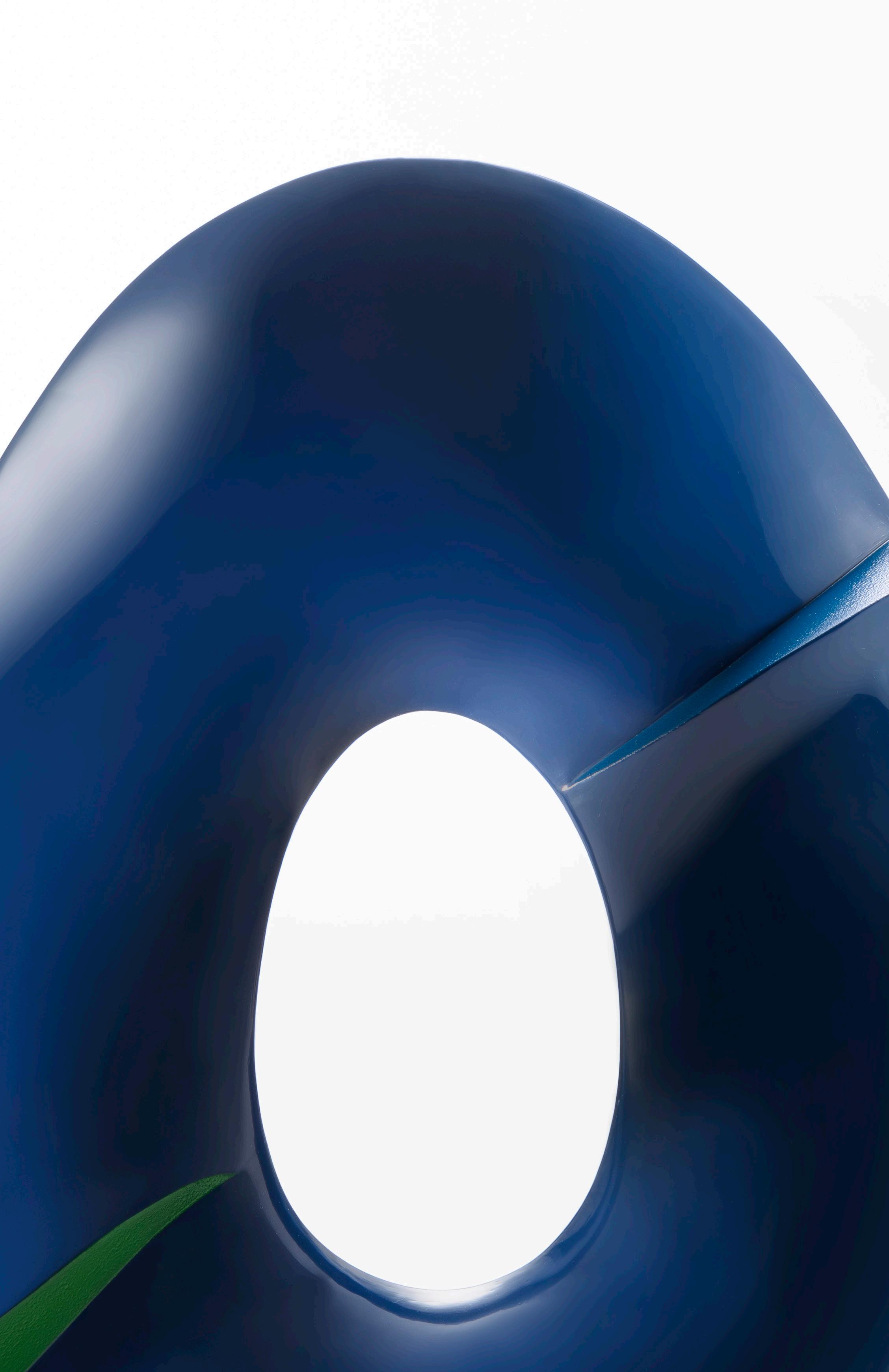

SASAI FUMIE
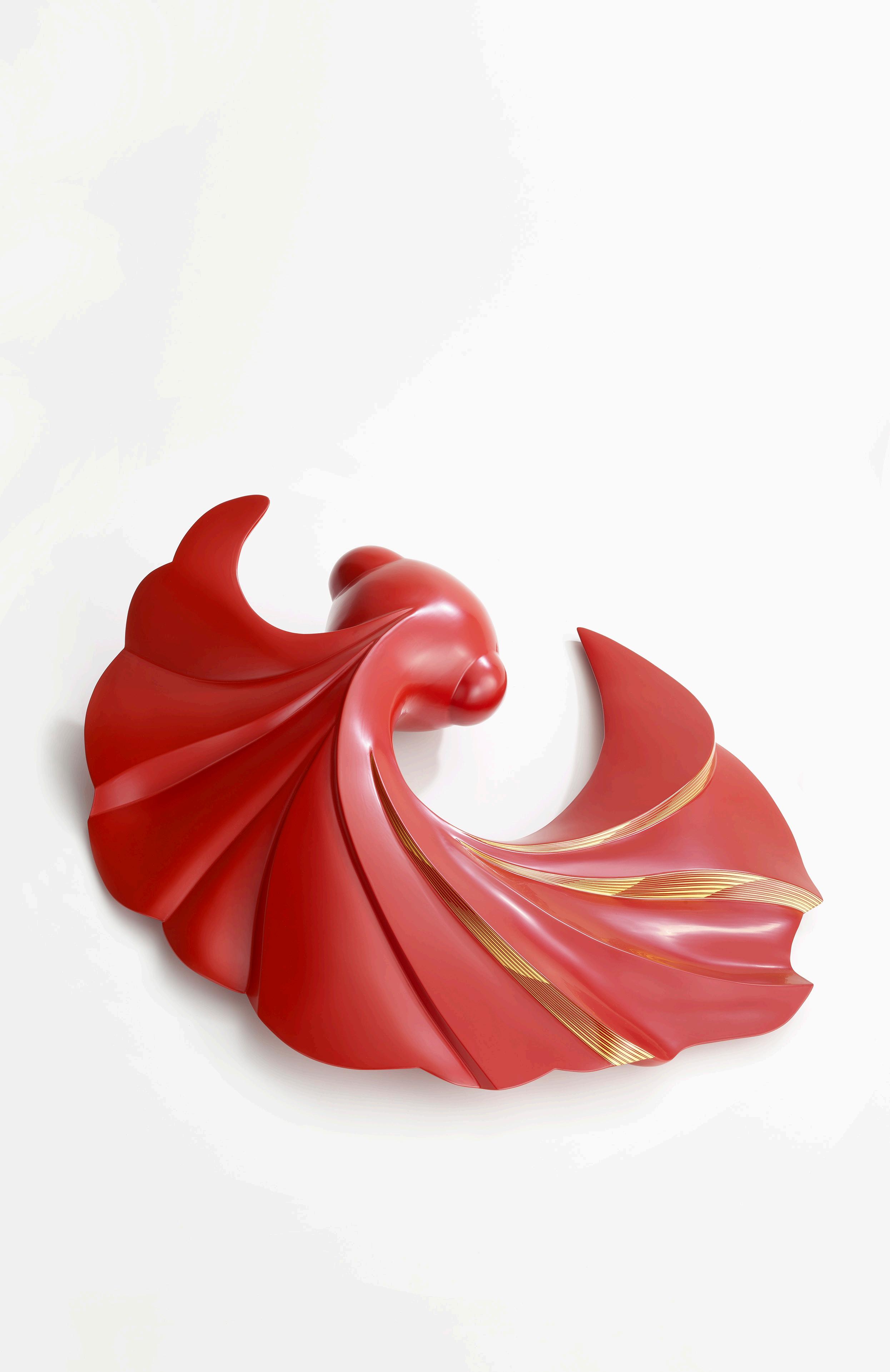
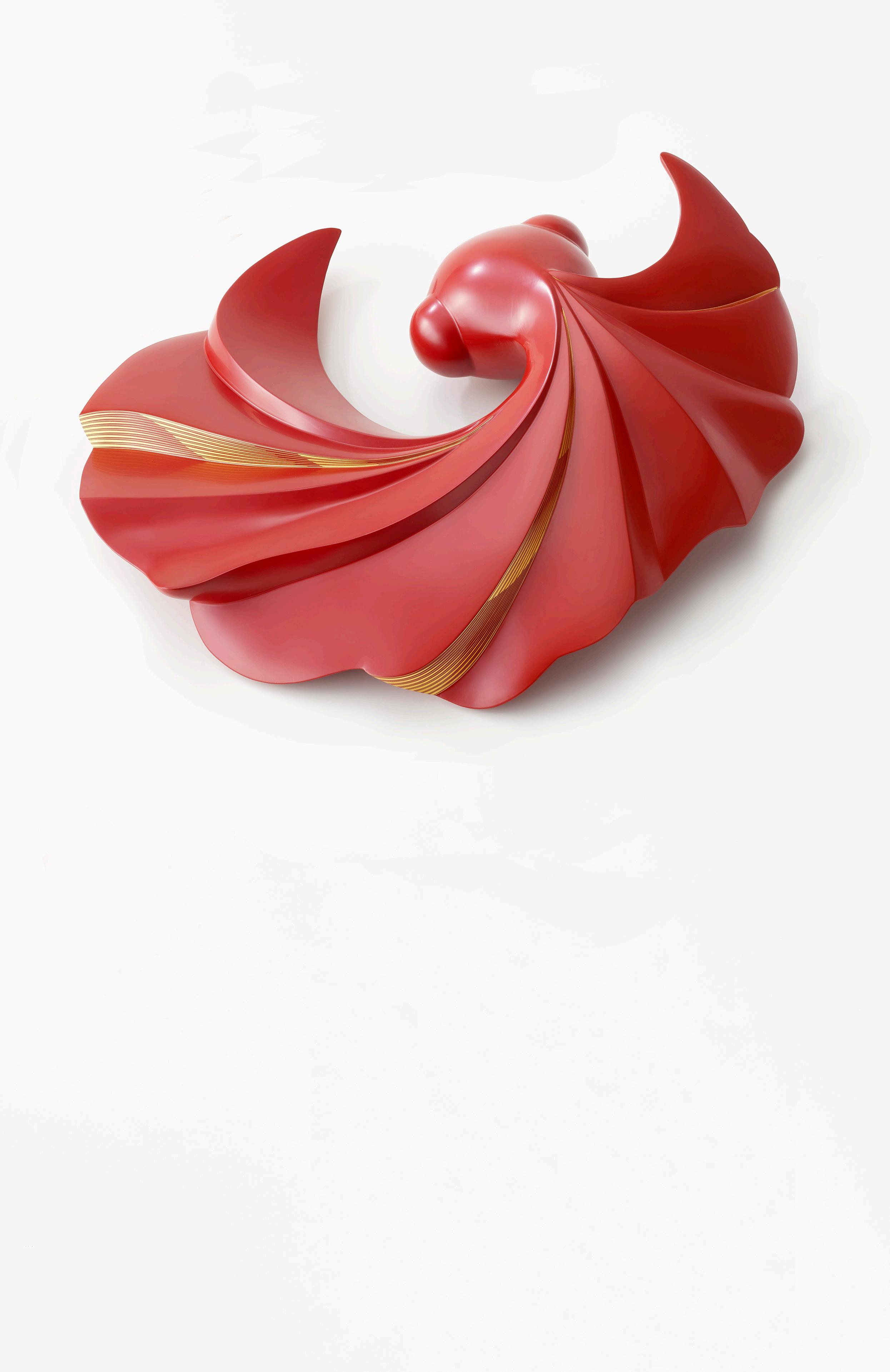
< Fish in t he Sky (renri) , 2019, 4.75 × 17.5 × 18 inches
Fish in t he Sky (hiyoku) , 2019, 5 × 18.25 × 16.25 inches
Kir ikane: Yamamoto Akane
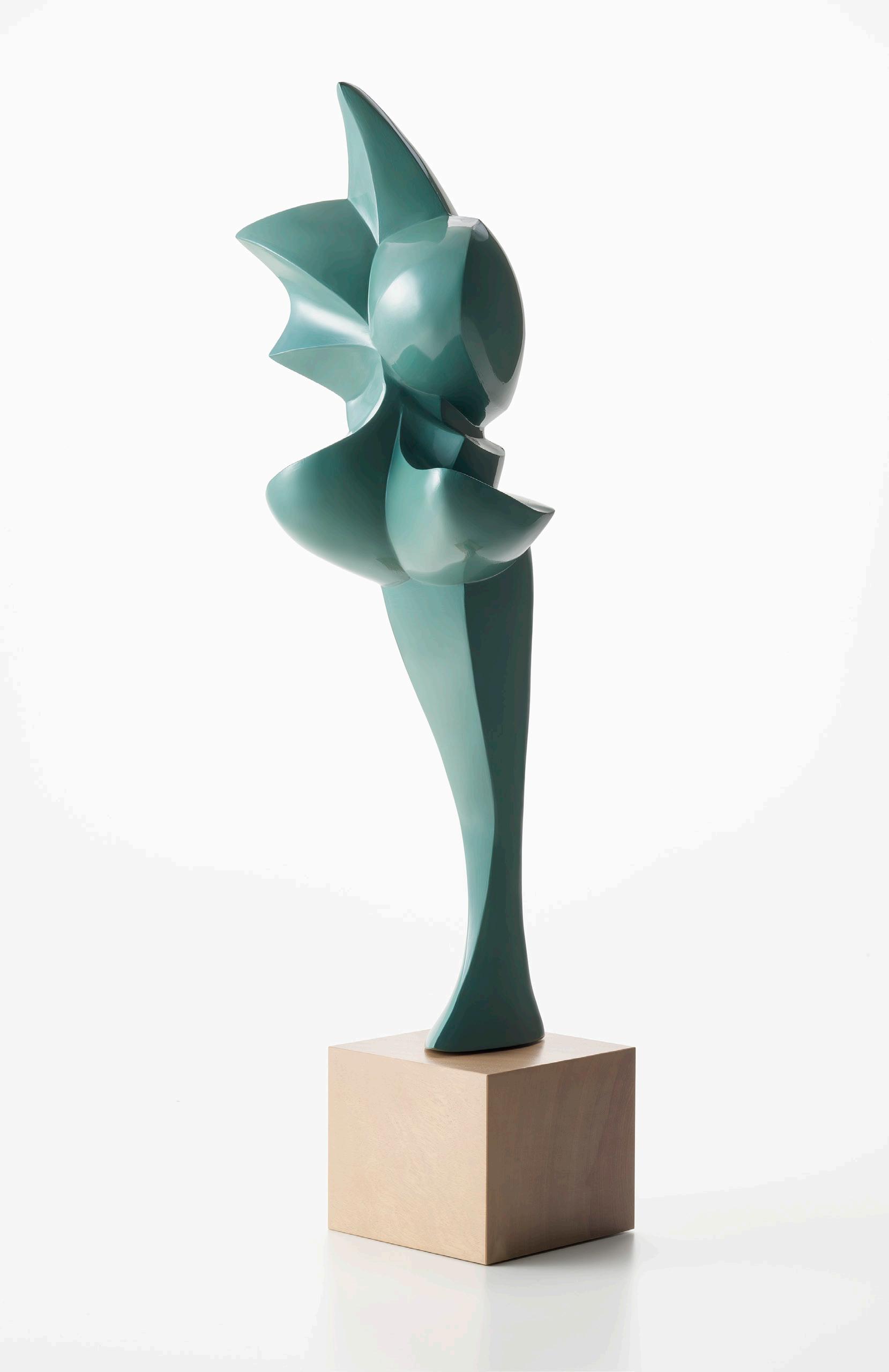
SASAI FUMIE ’ S LACQUER ART : LOVELY LIFE FORMS WITH
VOLUME AND EDGE
Sasai Fumie is a leading contemporary female lacquer artist who specializes in kanshitsu, the dry lacquer technique, in which layers of lacquer and hempcloth are applied over a mold.
Sasai was born in Osaka in 1973, studied lacquer art at Kyoto City University of Arts, as both an undergraduate and graduate student, and is now a professor at the same university. During her first year as a university student, she tried her hand at ceramics and textile dyeing but ultimately chose to work with lacquer. She found it intolerable that in ceramics the initial shape of a piece of clay loses its volume through drying and firing. In contrast, her lacquer works became fuller and fuller as she added layers of hemp-cloth and lacquer. After graduating from university, Sasai studied at Chiang Mai University in Thailand, where she was moved by the fact that the Thai word for “lacquer” also means “love.” For her, the creation of lacquer art is something to be nurtured with love.
Many lacquer artists are found in Asia, including Japan, which has a humid climate. This is because, unlike everyday paint, lacquer is a natural material, sap from the urushi tree, which requires humidity, not dryness, to harden. The urushi tree itself grows easily in humid climates, so lacquer is a material well known in Asia. Lacquer has been widely used in Japan since the Neolithic period including on lacquered earthenware pottery. The unique color and sheen of lacquer have sometimes been seen as sacred.
While there are some older examples of the dry lacquer technique, such as the 8th-century statue of Buddha Ashura at Kofuku-ji Temple in Nara, many representative lacquer works up to the 19th century, such as maki-e boxes, were made by applying lacquer over a wooden form and ornamenting it with maki - e (sprinkled silver and gold designs) or other decorative techniques. These works were typically made through the division of labor. For example,
Gentian , 2025,28 × 7.25 × 6.5 inches
it was common for a woodworker to make the wooden base and a lacquer craftsman to apply lacquer to it and decorate it with maki - e or some other embellishment.
In the 20th century, serious individual lacquer artists emerged. The technique of dry lacquer was an important factor in this development. Dry lacquer makes it relatively easy for a single artist to create the body of a piece by themselves. The artist is free to design their own form and then carry out the lacquering and finishing in accordance with the form.
The diversity of forms in Sasai’s work is due in part to this dry lacquer technique. Sasai learned this technique at Kyoto City University of Arts, where she currently teaches. Her teacher, Shinkai Gyokuho (1939 – 2021), was one of the first to use the dry lacquer technique to create abstract objects. Instead of the traditional method of making a plaster mold from a clay prototype and layering lacquer and hemp - cloth in the interior, in the 1960s he began working on a new dry lacquer technique that used lightweight Styrofoam as the base instead of clay with the layers of lacquer and hemp-cloth applied directly on top of it.
After Shinkai, Styrofoam-based dry lacquer objects gradually became more popular, and Sasai has also used this technique. However, her style is unique and differs from that of Shinkai and other artists, with rounded and voluminous forms reminiscent of animals, plants, and a sense of life. The shapes often have clear ridges that add strength. Recently, she has incorporated not only hempcloth but also Japanese paper into the dry lacquer process, which adds a smooth and soft feeling to her work. Sasai already had experience with the use of paper in dry lacquer, having used local paper when she was studying in Thailand.
Since her student days, Sasai has used vermilion lacquer extensively in her work. Since ancient times, the color of lacquer has often been vermilion or black, with vermilion in particular considered an auspicious and noble color. However, in Sasai’s work, it is also a color that symbolizes the vitality of starfish, fish, and other living creatures. It is more like a vivid “red” than vermilion.
The surface finish of lacquer works varies depending on the artist, and Sasai often uses a nuritate (freshly lacquered, not polished) finish which gives asoft, glossy impression. Many Japanese lacquer artists prefer a finishing technique called roiroage (complete polishing) in which the surface is thoroughly polished to a high shine, but Sasai finishes the surface in a way that ensures the
warmth of her rounded forms is not lost. Sasai herself has said, “I would like to create lacquer that makes you want to touch it.” Sometimes she might add a little maki - e or other decoration to the surface of the lacquer. In each of Sasai’s works, the color and the nuritate finish emphasize the charm and liveliness of her forms. Just as children, young animals, and newly sprouting plants inspire affection in anyone who sees them, Sasai’s works speak to us with friendly, approachable expression.
In recent years, Sasai has been using not only red but also cool colors such as blue and green, as well as white. White lacquer is used to represent the motif of clouds drifting in the sky. Japanese nature and the traditional concept of Kachofugetsu (flowers, birds, wind, and moon) seem to have become a theme in Sasai’s work. The bright and lively character of each piece encourages and energizes the viewer.
Since around 2014, Sasai has also been collaborating with craft artists in other mediums, such as bamboo. Lacquer can be both a decorative coating and an adhesive, so it is easy to combine with a variety of materials. Above all, dry lacquer objects are lightweight, making them easy to move and wellsuited for display on the wall.
This exhibition at TAI Modern is Sasai Fumie’s first solo show in the United States.
She celebrates the sparkle of life in all living things with her clear-edged shapes and bright colors. Encountering Sasai’s work, which embraces the natural energy and sacredness of lacquer, is sure to fill the viewer with an uplifting sense of optimism.
n Todate Kazuko, Professor, Tama Art University, Tokyo
Photo Credits:
Pages 24 – 25, 33: Photo by Imamura Yuji. Image courtesy of Sokyo.
Pages 14 –15, 22: Photo by Tadayuki Minamoto.
Pages 30 – 31: Photo by Kaneoka Hiroshi. All other photographs by Imamura Yuji.
Ba ck Cover: Kasane – Emazu , 2021, 6.5 × 10.25 × 5.5 inches
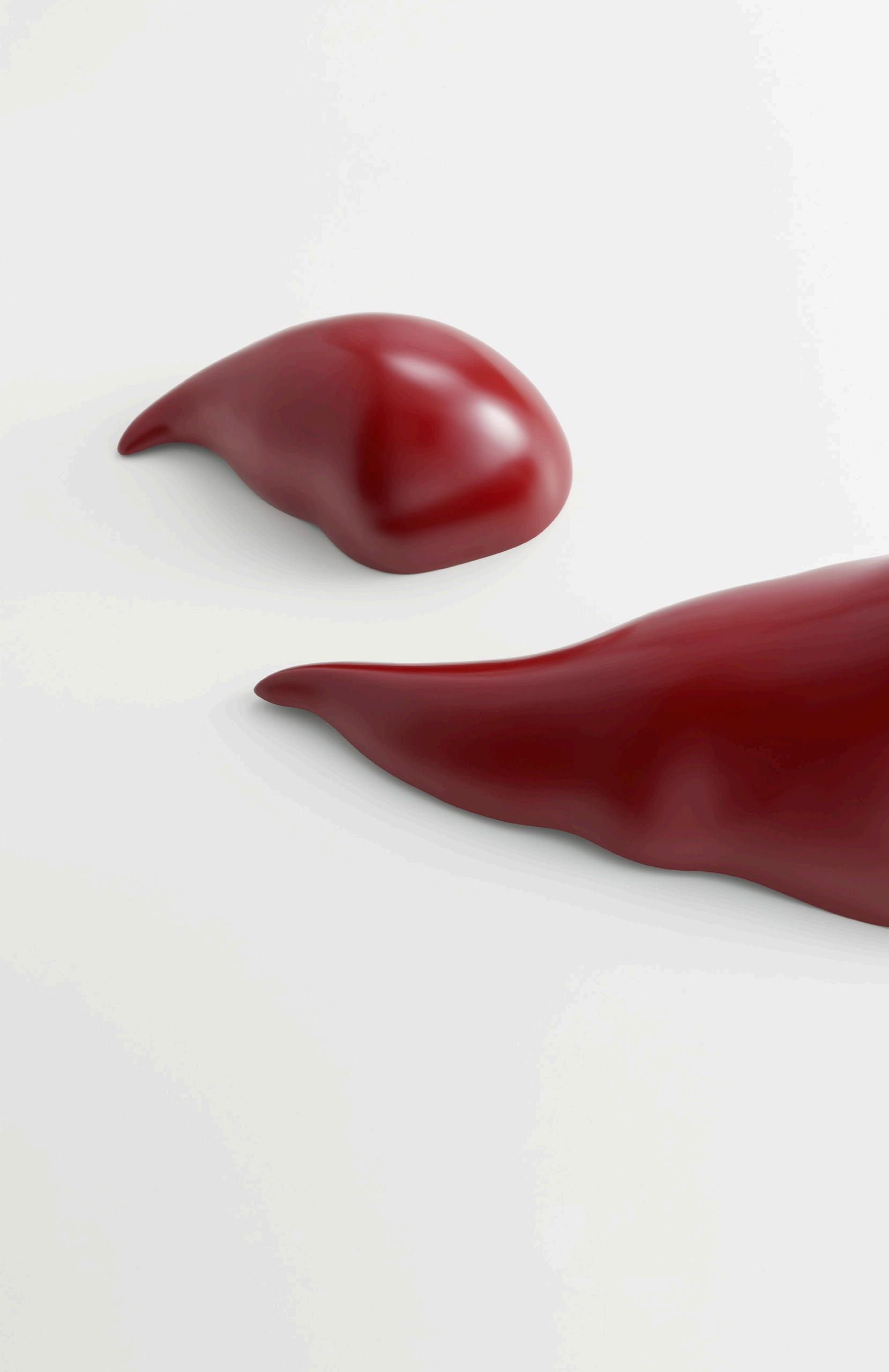
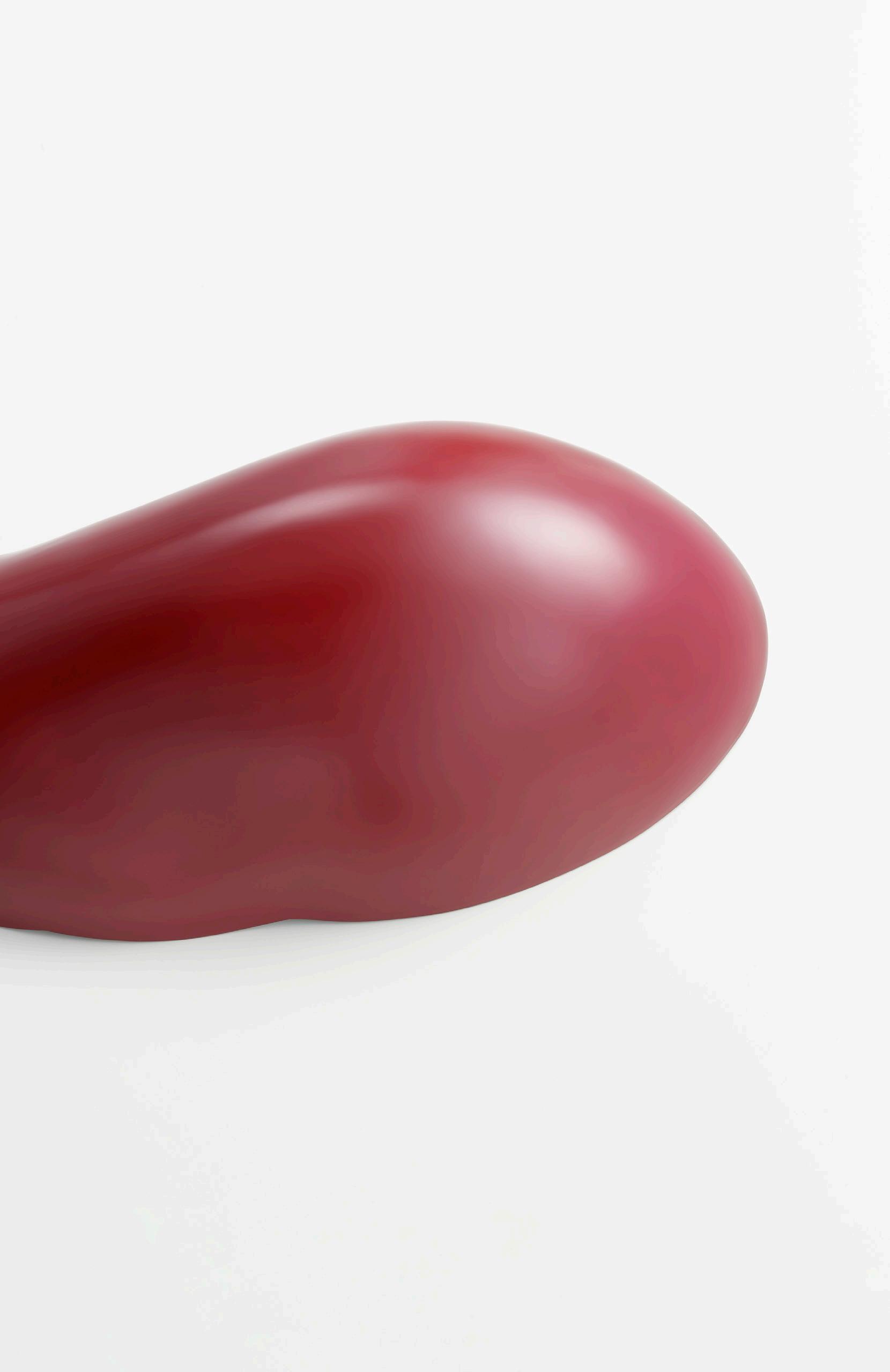
Nestle , 2013, 15.5 × 40 × 9.5 and 7.5 × 14.25 × 5.25 inches
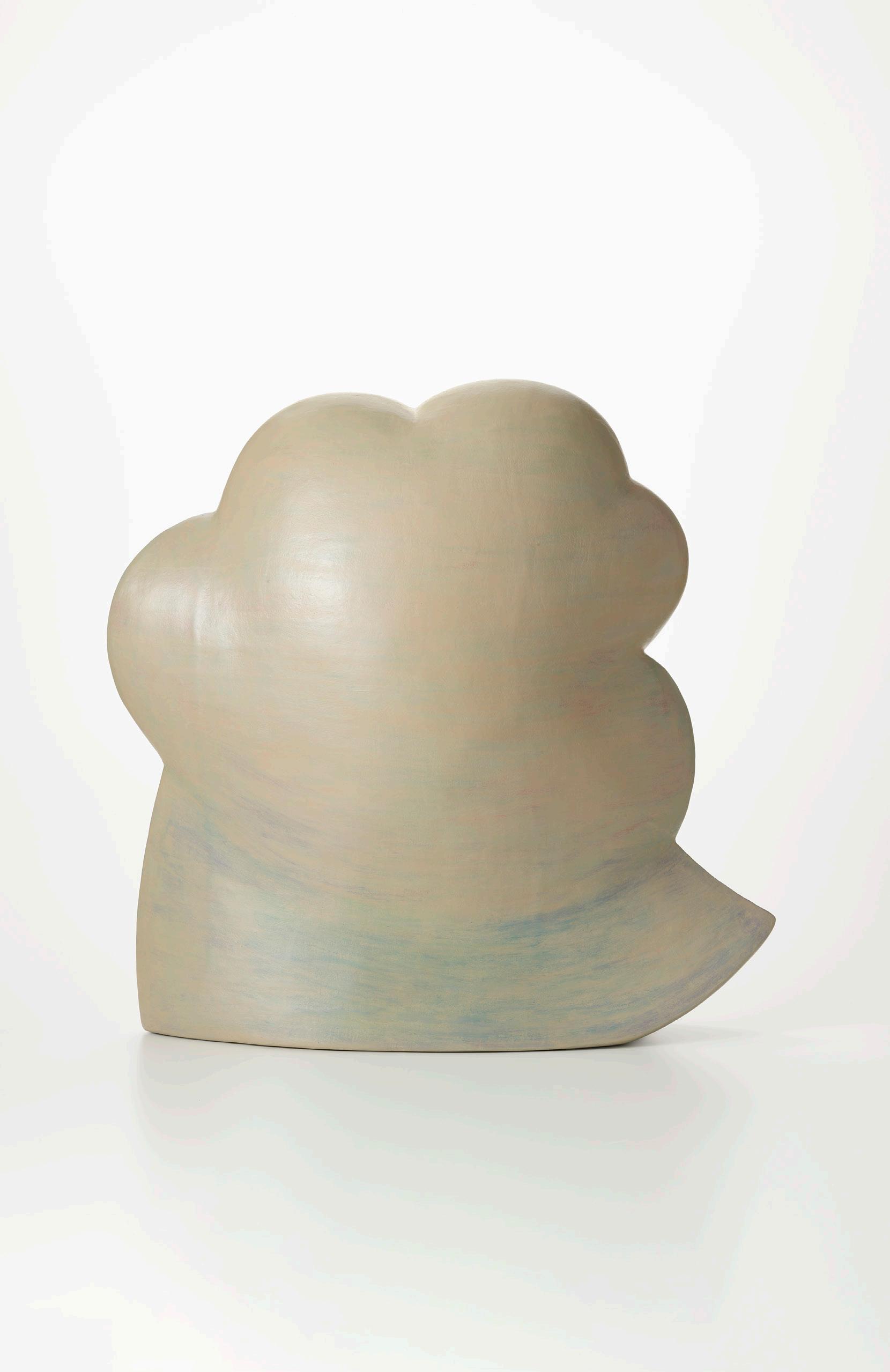
URUSHI ART WITH FUEKI RYUKO
The “urushi” used in urushi, or lacquer, art is refined from the sap of the urushi tree. I think of urushi as a material that has life , and I believe life cannot be separated from heart
Cuteness, beauty, kindness, and compassion are important to my heart. Feelings of tenderness overflow in response to flowers, fruit, and children. For me, the passion born from these overflowing feelings motivates me to create my works.
I am also deeply drawn to the concept of “Fueki Ryuko.” This phrase originated with Matsuo Basho, a haiku master active during the Edo era in Japan. “Fueki” refers to values that are unchanging over time. “Ryuko” refers to values that shift according to the times and circumstances. The harmony between “Fueki” and “Ryuko” express “Elegant Sincerity” = “The Essence of Beauty.”
For my Fueki, I have consistently used the motifs of flowers, fruit and children and the soft surface texture of urushi to create forms that make you want to touch them.
Over time, my style of expression has changed little by little as I spent time with urushi. These changes have become my Ryuko, and I have incorporated imagery inspired by the layering and knotting of kimonos, creating shapes that show the beauty of urushi’s soft surface with a series of ridgelines. I have also collaborated with exciting bamboo and kirikane (cut gold leaf) artists to create unexpected focal points and forms.
Furthermore, in recent years, I have been adding sashi iro, meaning accent colors, to my works. These colors that contrast with the overall palette serve as focal points that increase the appeal of the work.
It is my hope that you are able to sense the Fueki Ryuko hidden in the urushi artwork of Sasai Fumie.
n Sasai Fumie
Yakumo - sama – Cloud , 2025, 21.75 × 23.75 × 8.5 inches
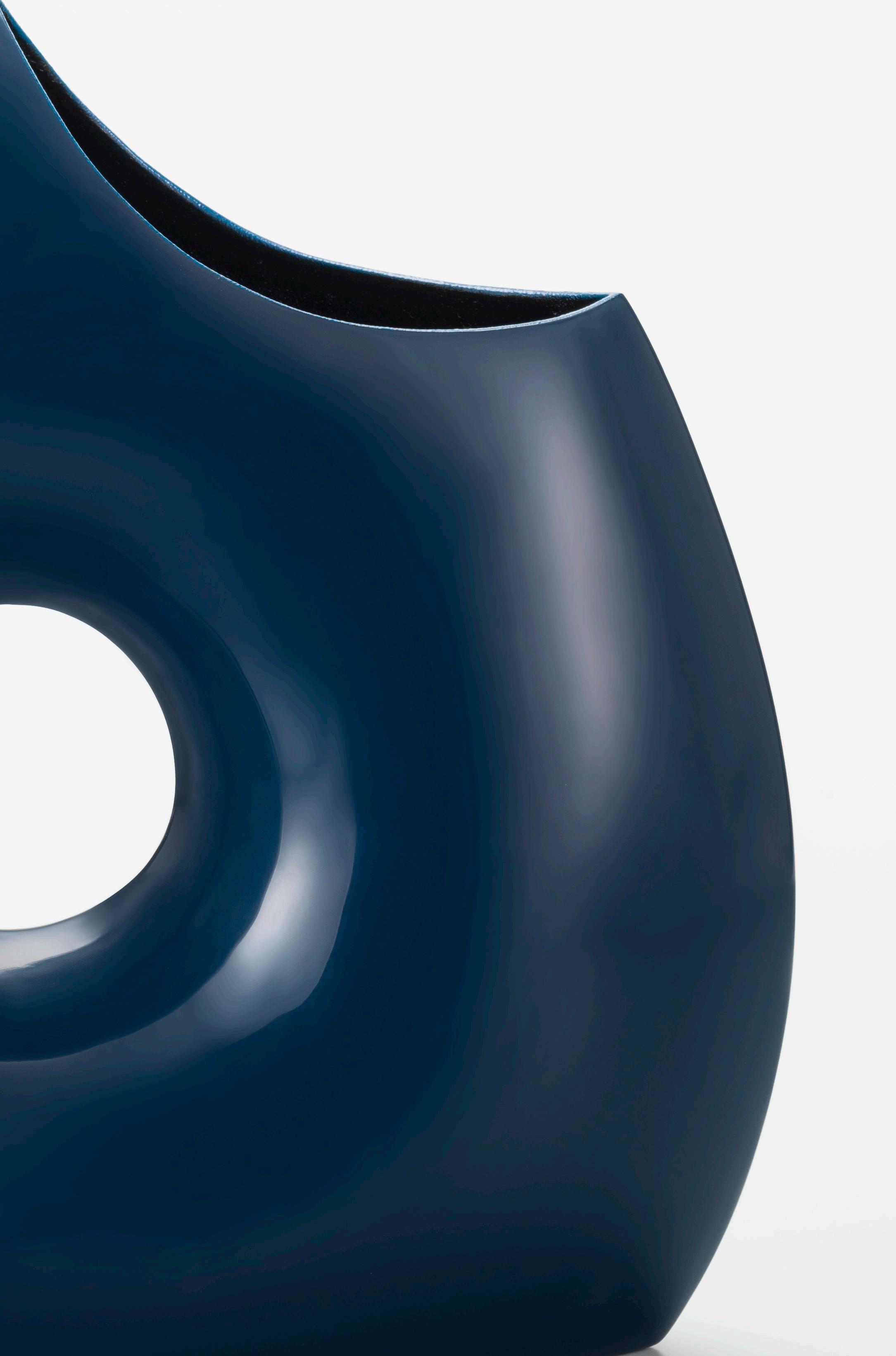
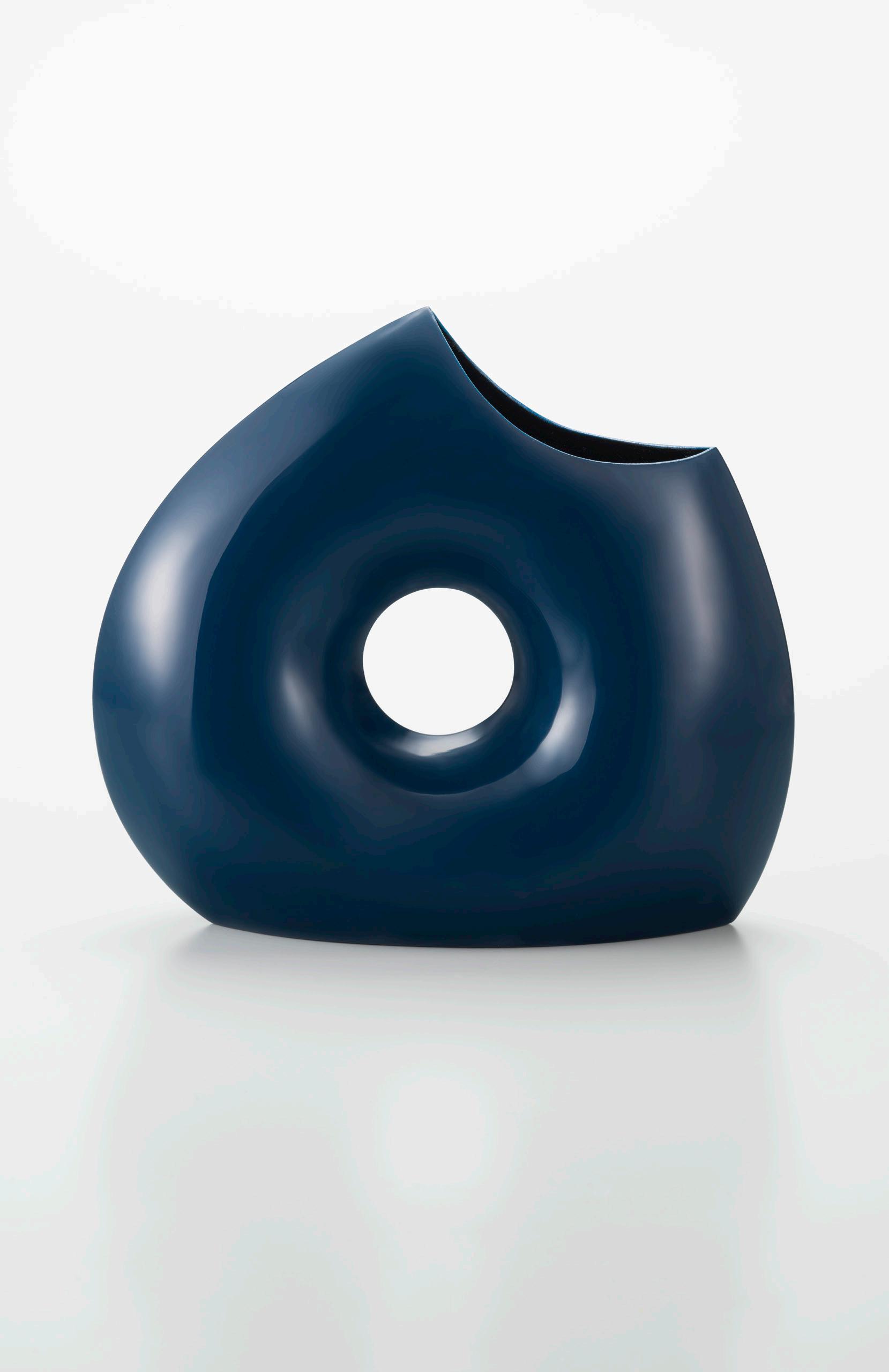
Night Moon , 2021, 8.5 × 10 × 3.5 inches
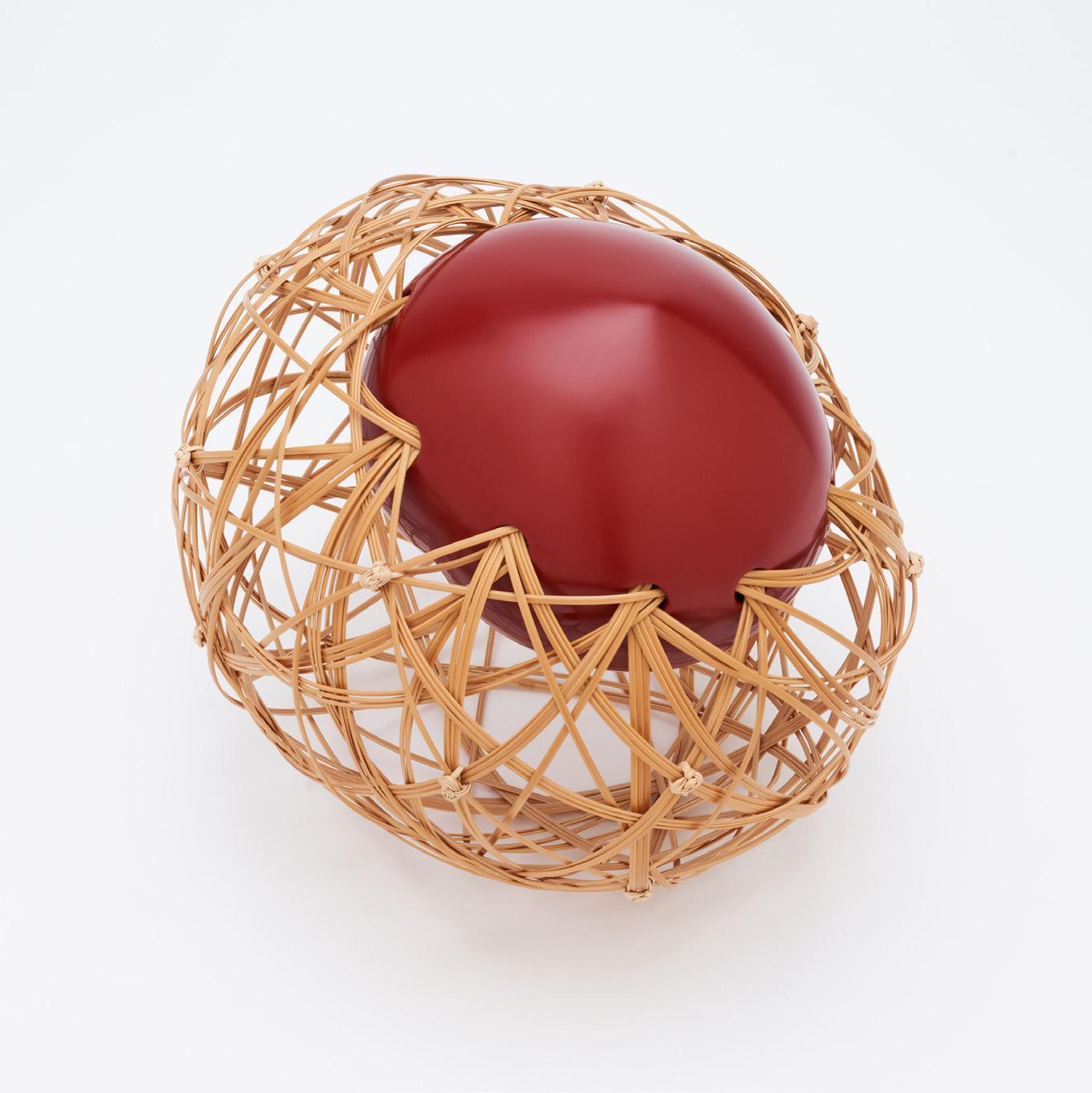
LOVE 1, 2023, 8 × 8 × 9.25 inches
LOVE 3 , 2023, 13.5 × 5.5 × 11.75 inches >
Bamboo: Tanabe Chikuunsai IV
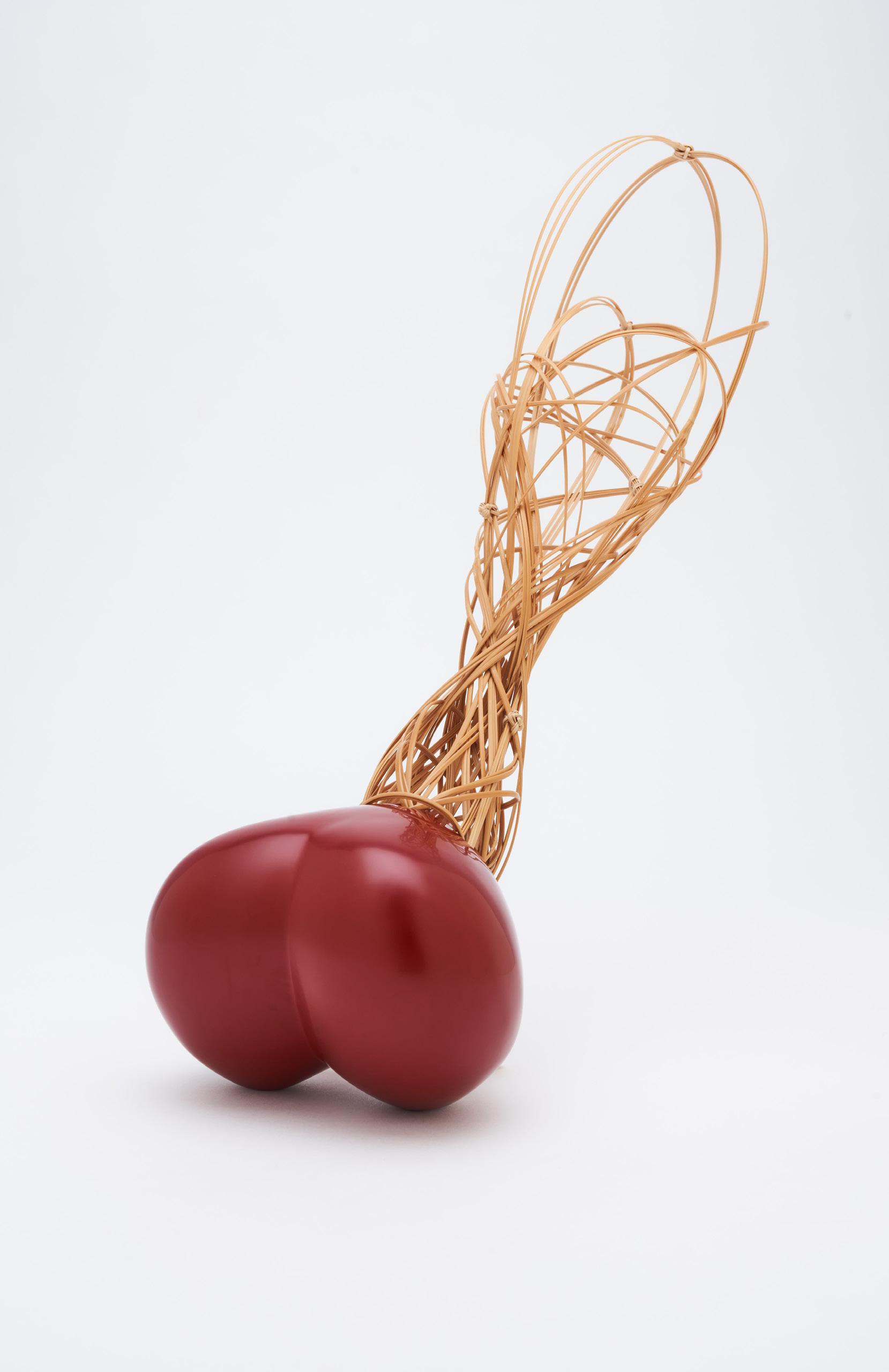
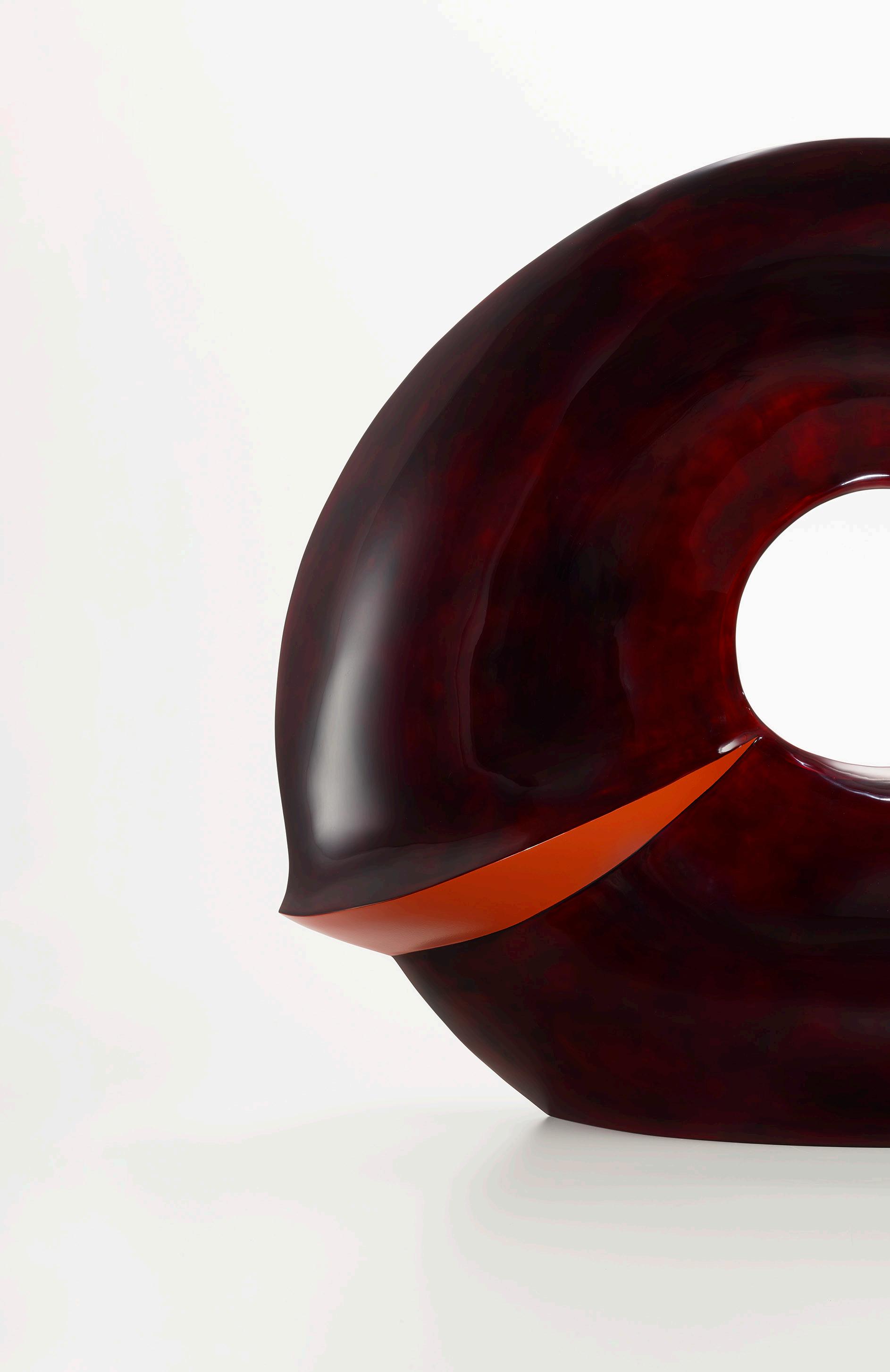
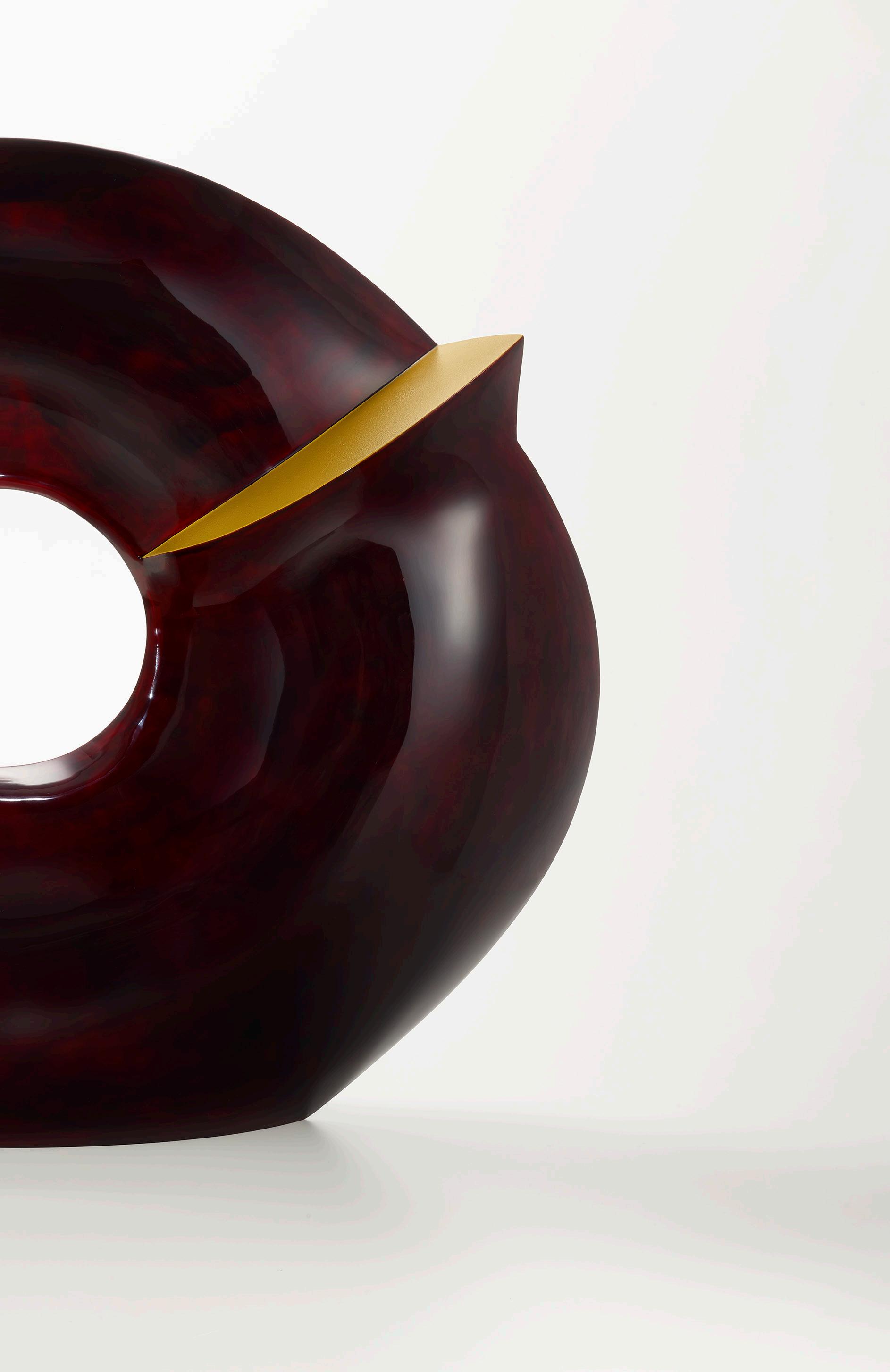
The Sun , 2025
29.25 × 36.25 × 8.75 inches
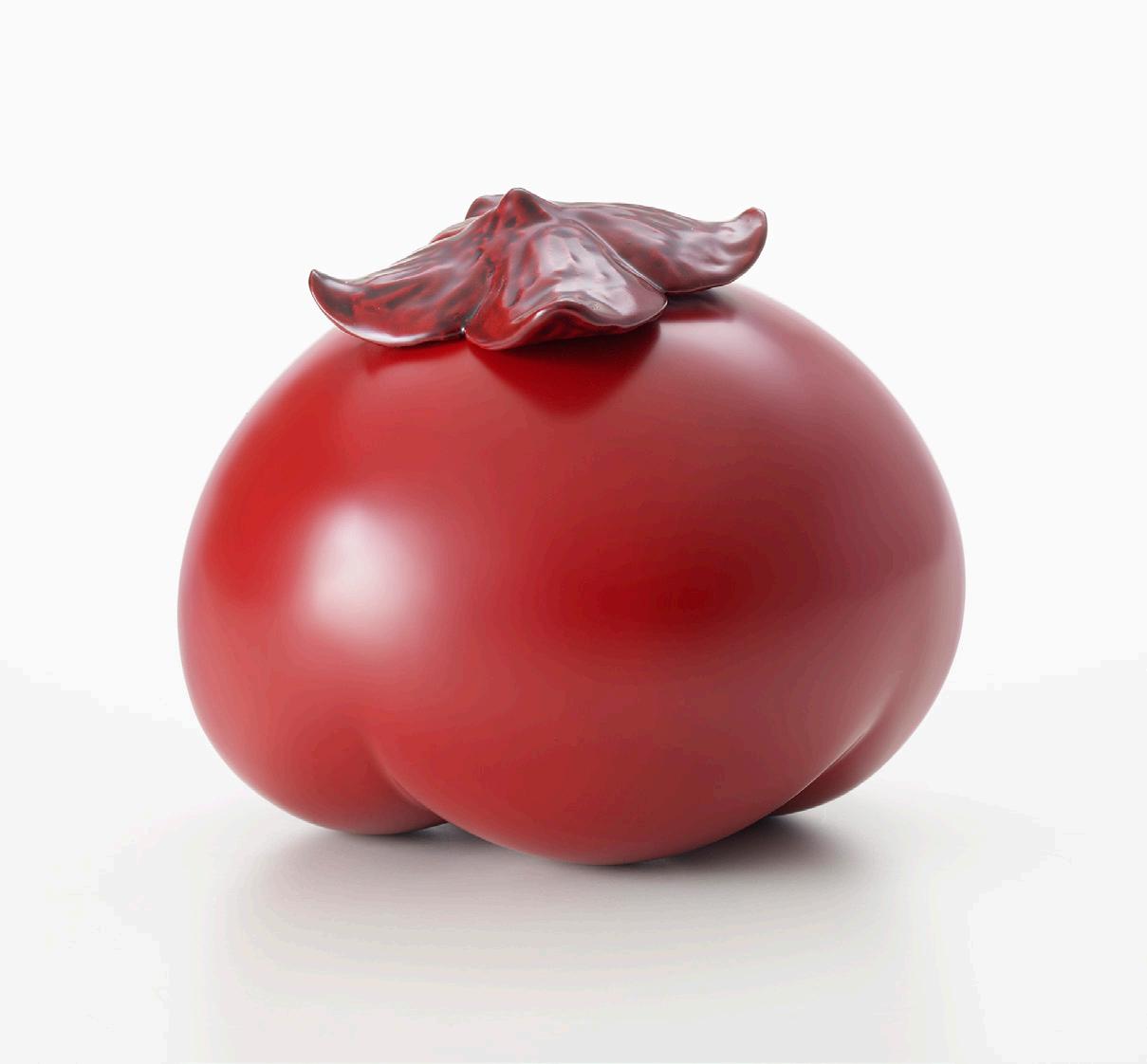
Persimmon Box , 2013, 4.5 × 4.75 × 5 inches
The Appearance of Wisdom, 2010, 11.5 × 15 × 14 inches >
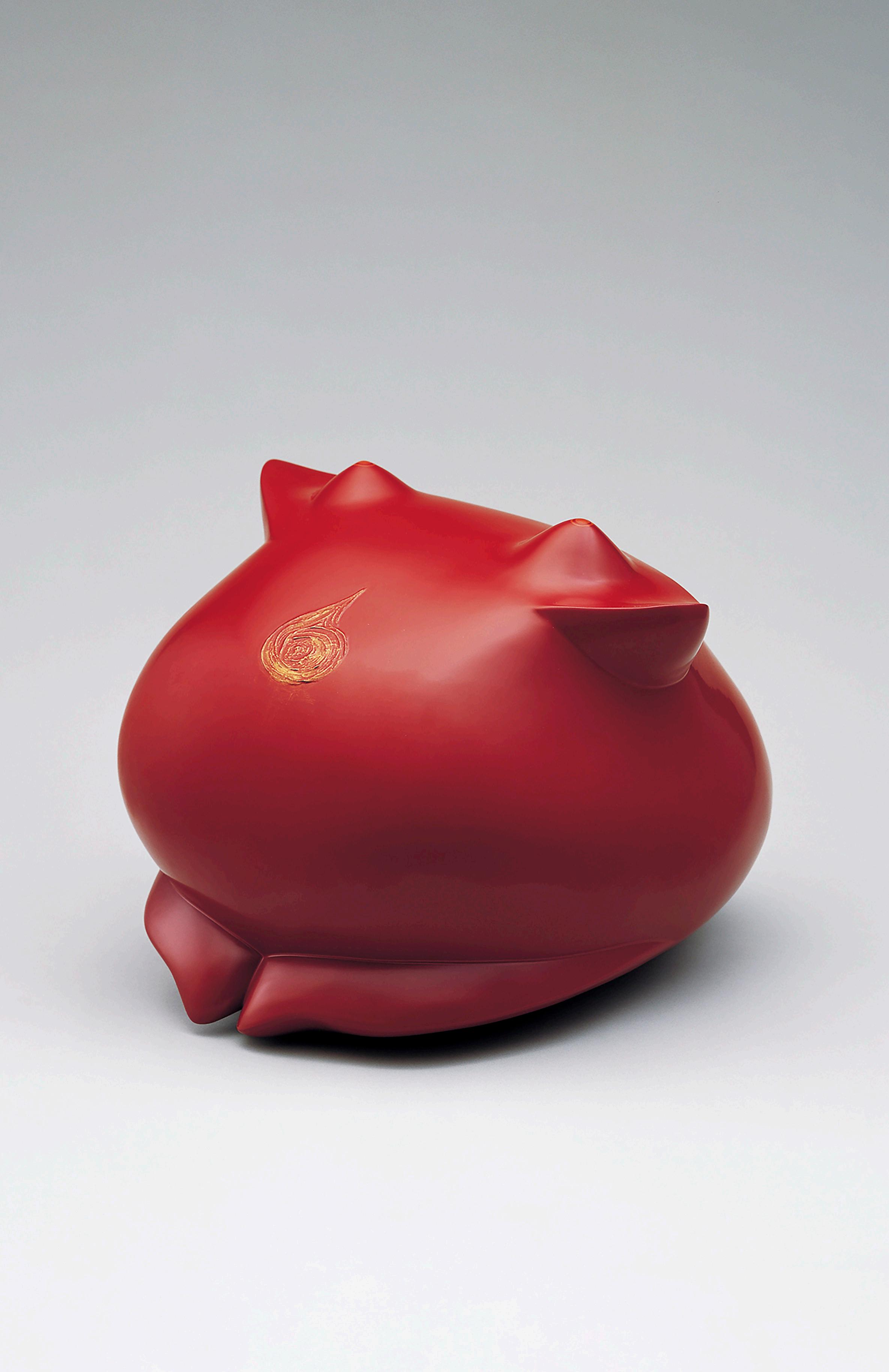
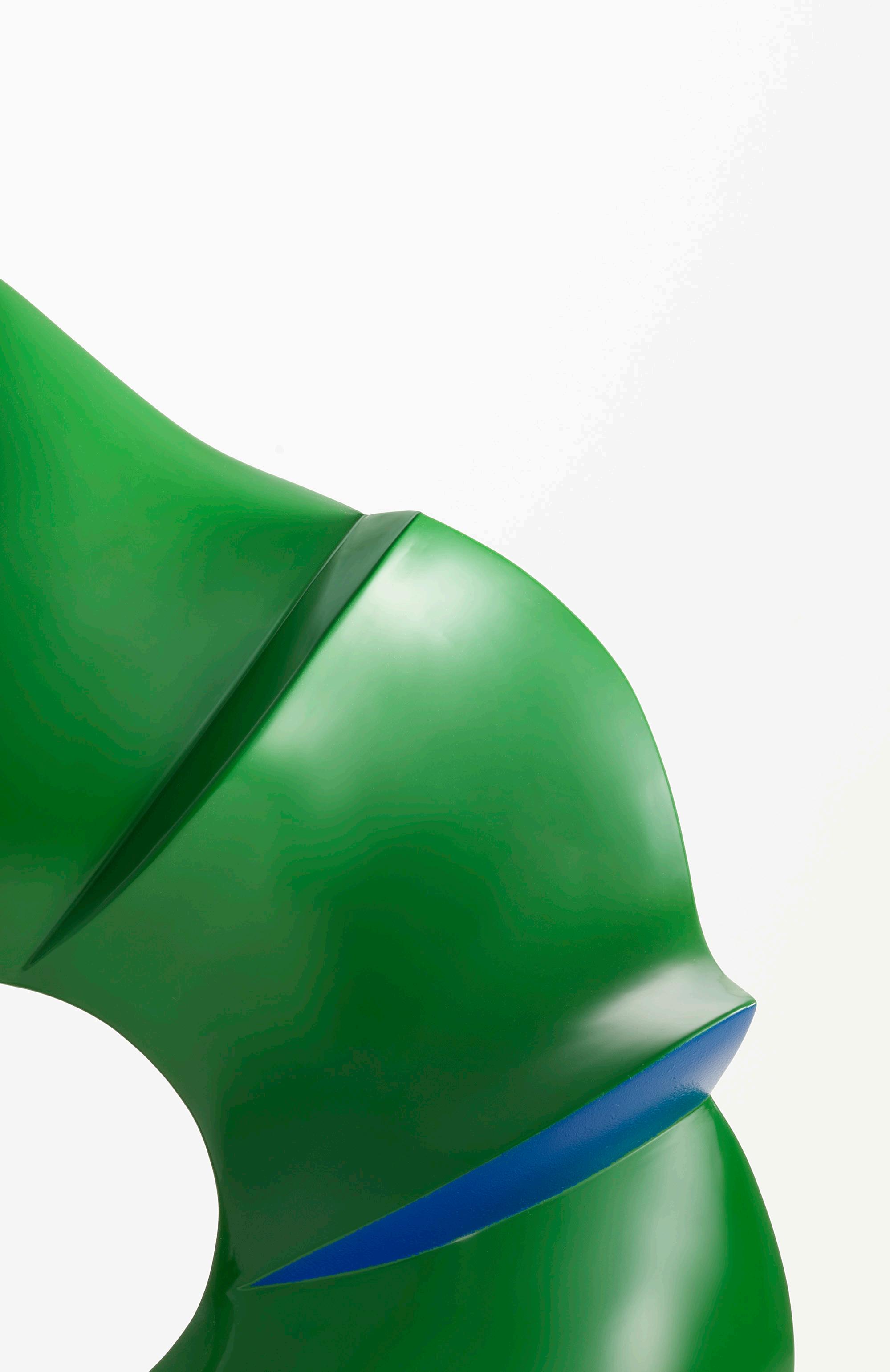
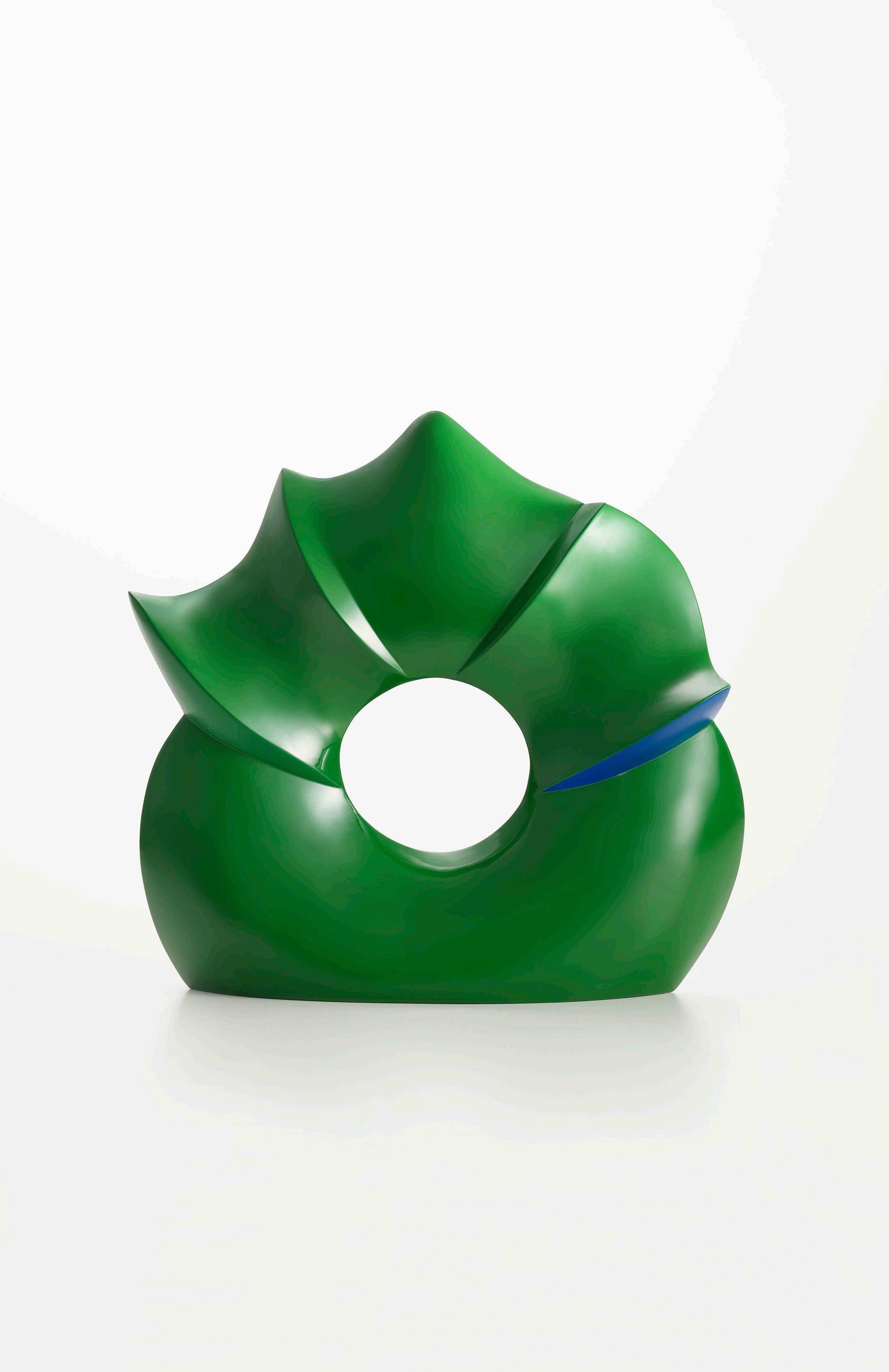
Green Flash , 2020, 12 × 12.25 × 3.25 inches
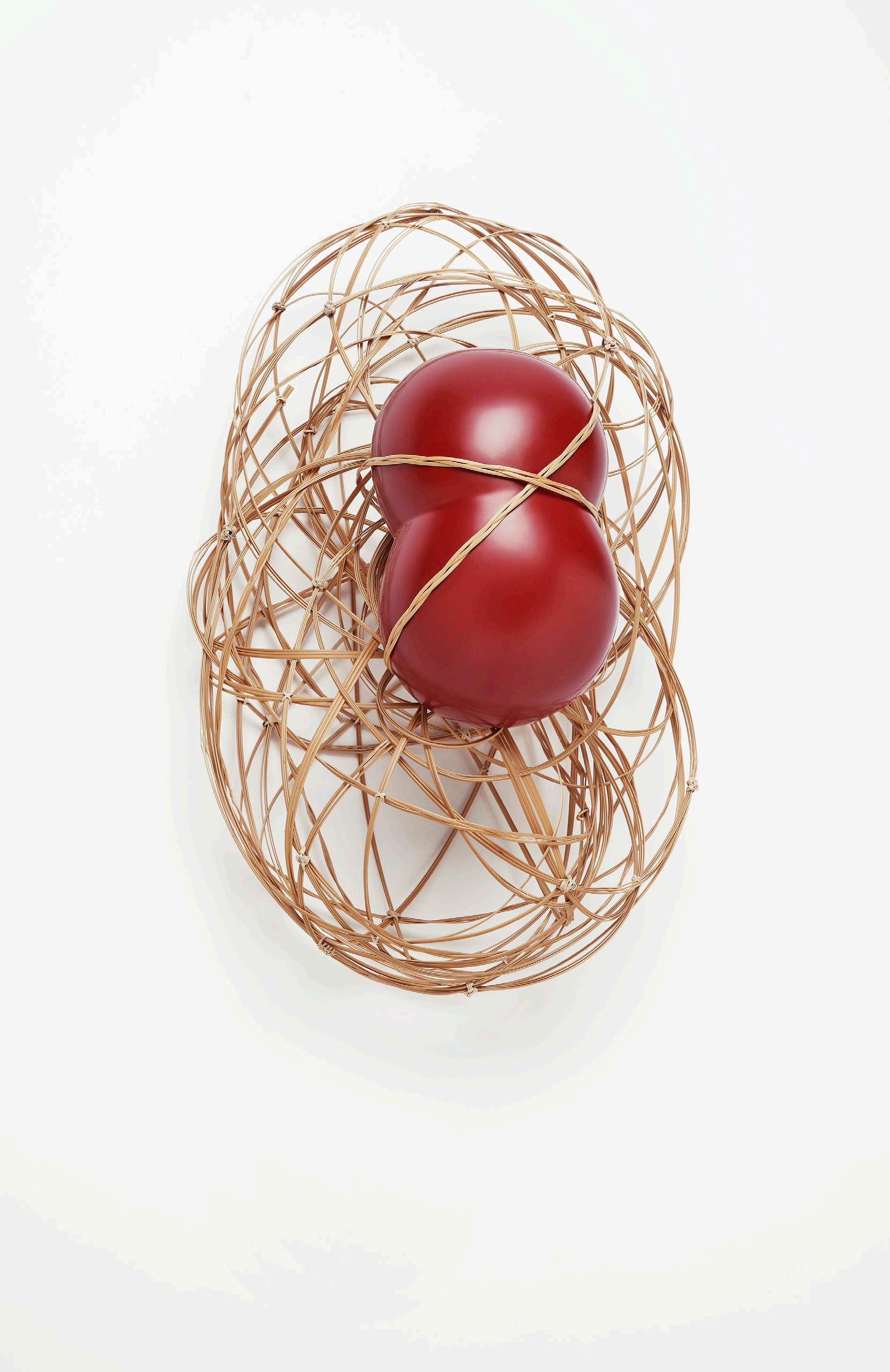
LOVE 2 , 2023, 16.5 × 7 × 10.25 inches
Bamboo: Tanabe Chikuunsai IV
Blessing, 2016,17.5 × 15.75 × 7 inches >
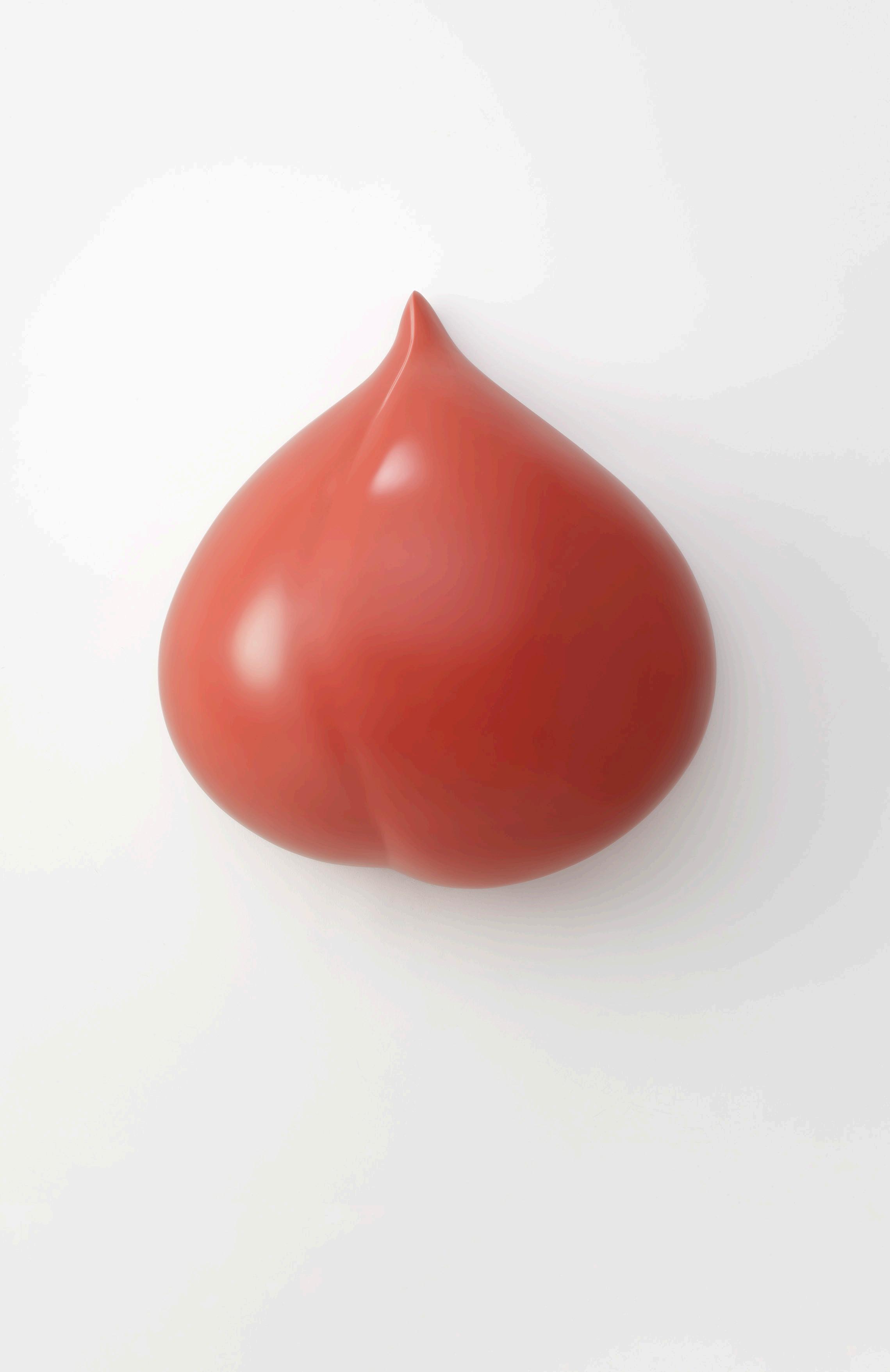
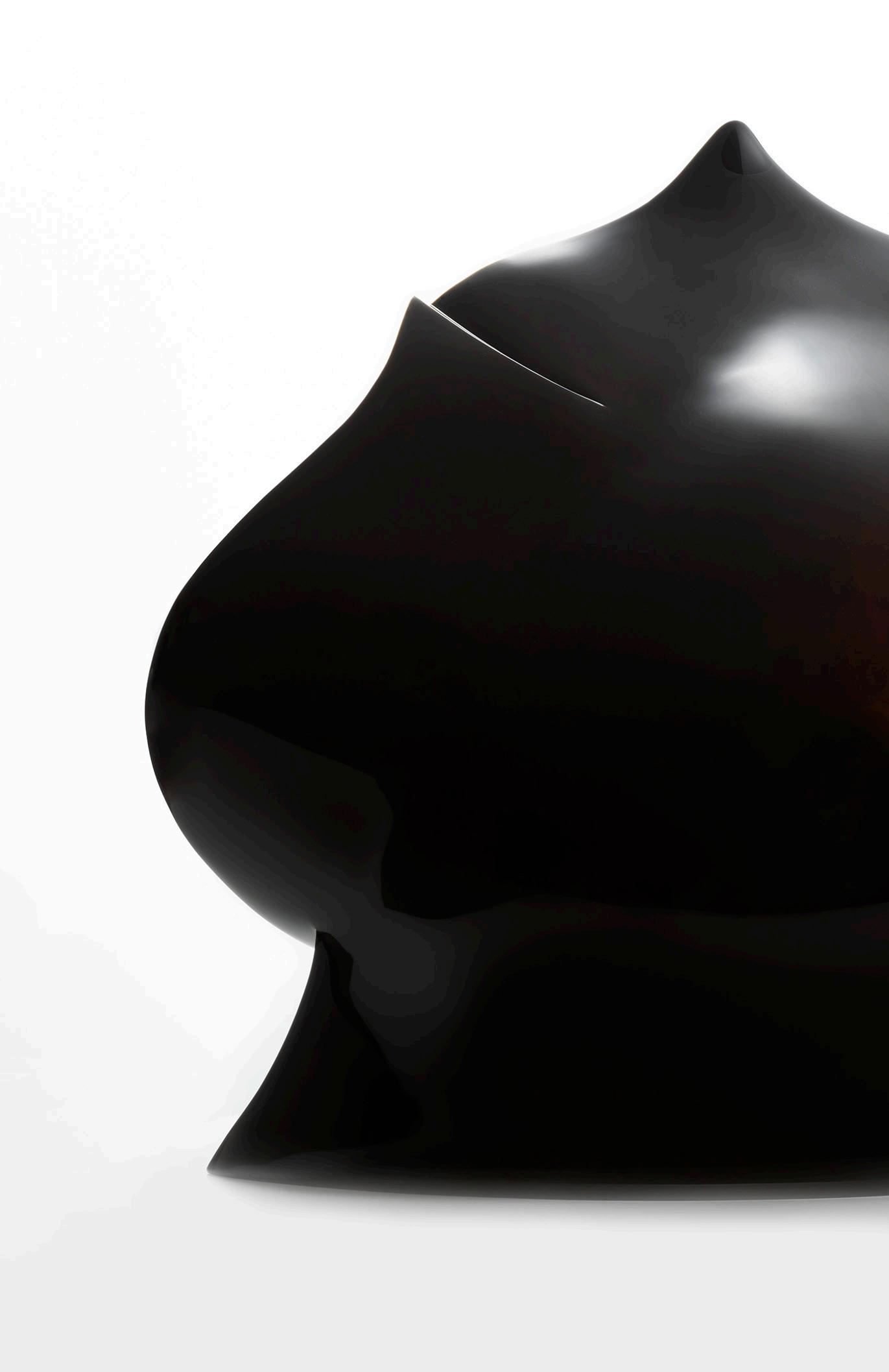
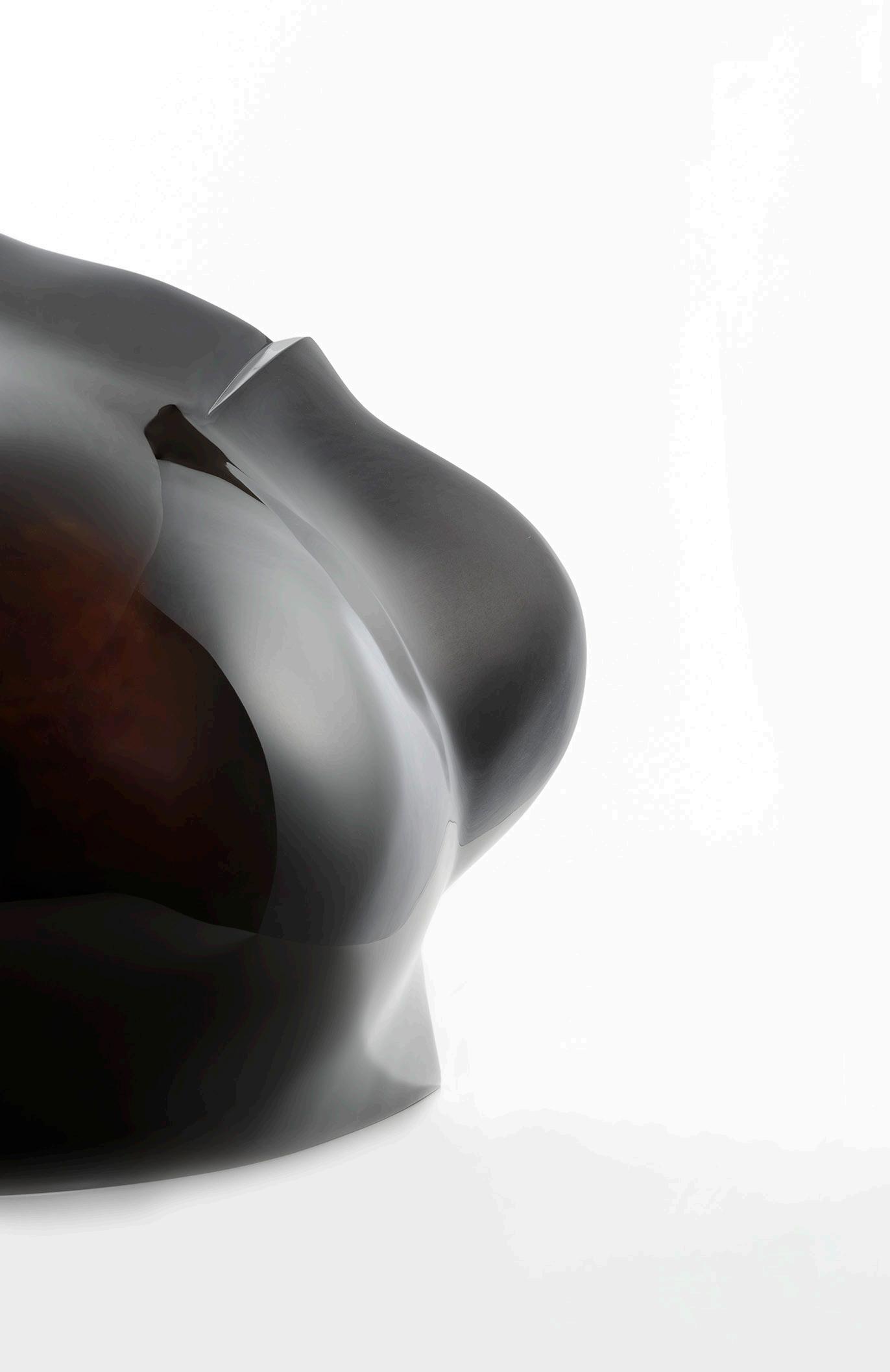
Jellyfish , 2020, 26.5 × 37 × 16.25 inches
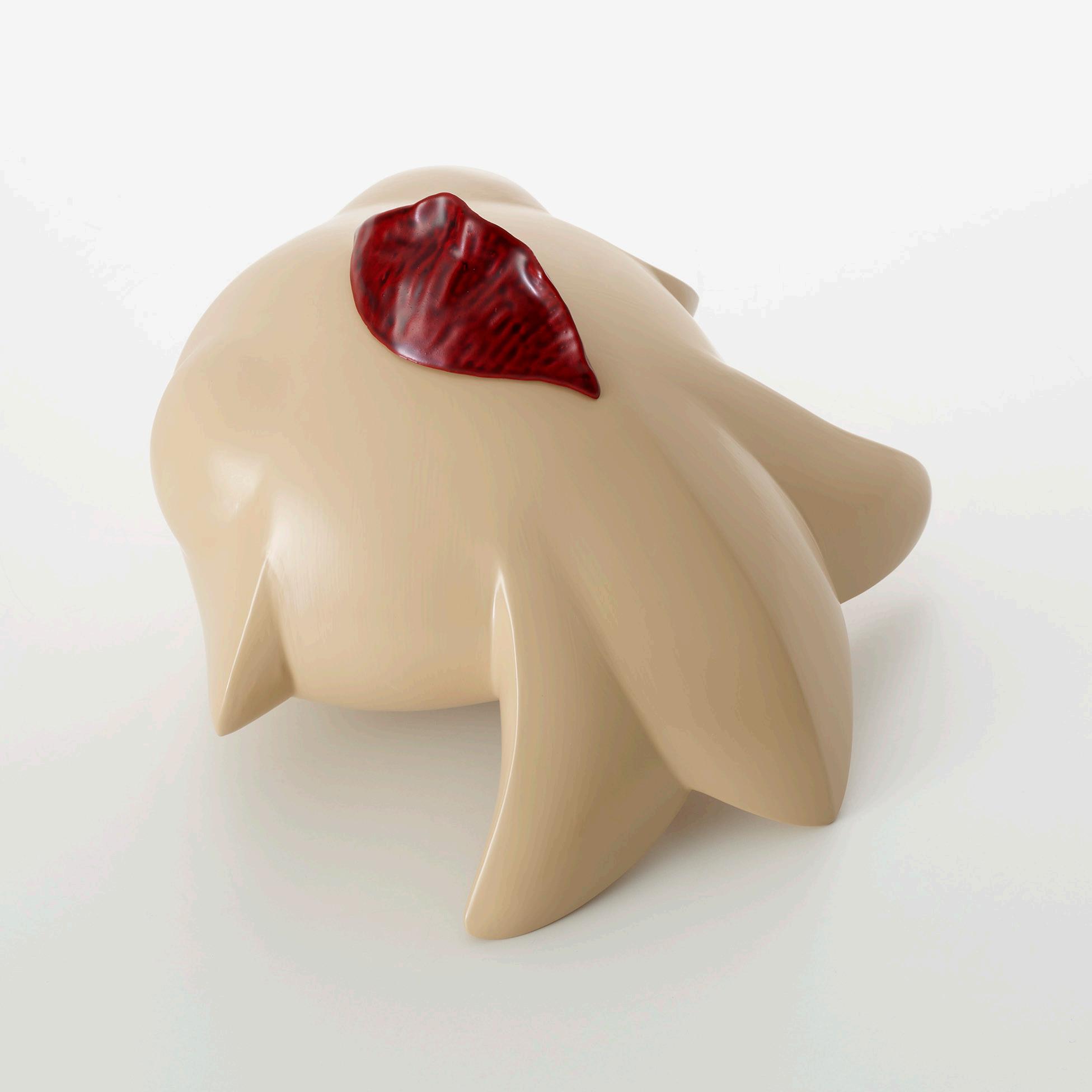
Gold Fish – Okashi, 2019, 5.25 × 6.5 × 6.75 inches
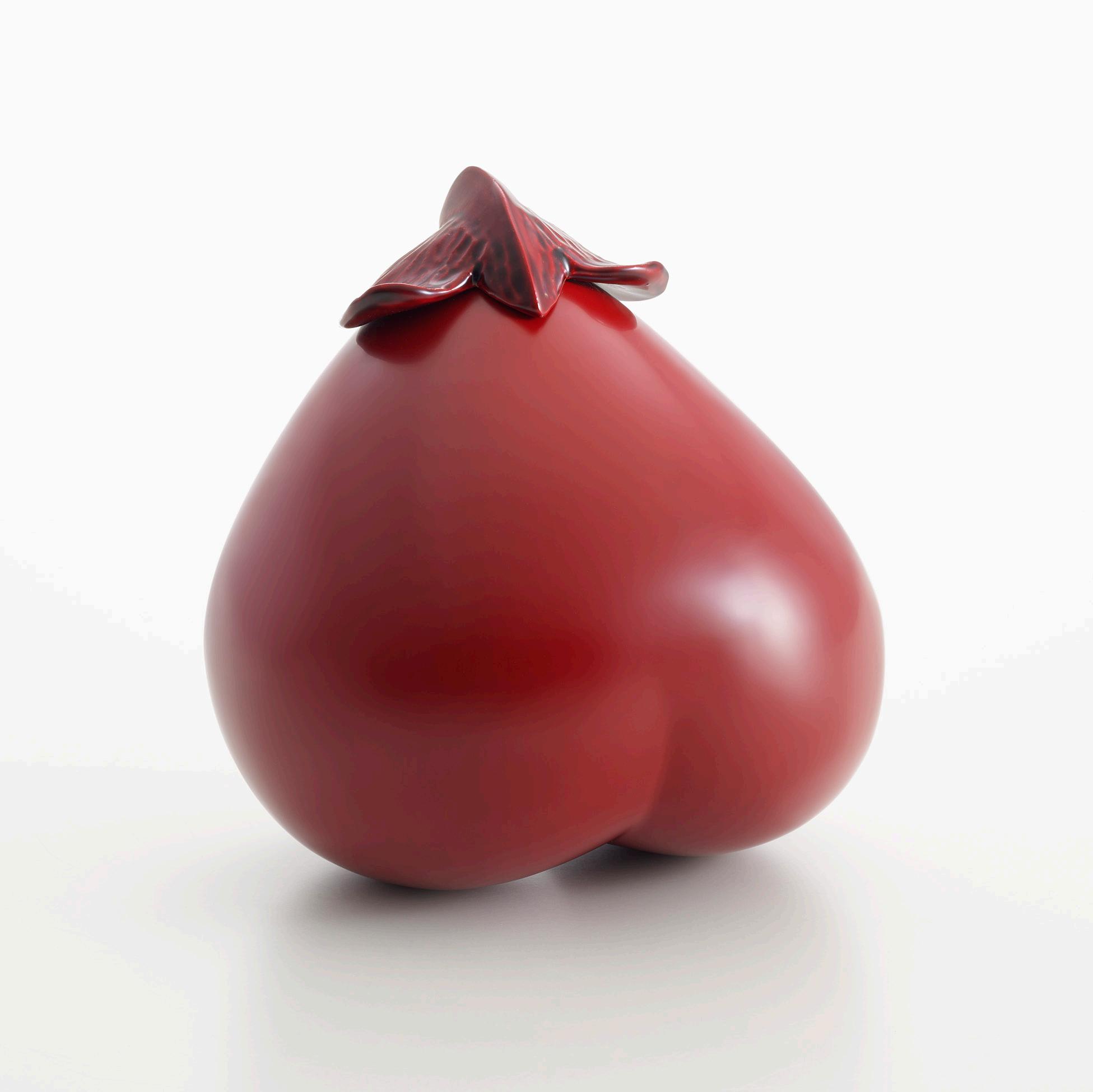
Peach Box , 2013, 5.5 × 4.5 × 4.5 inches
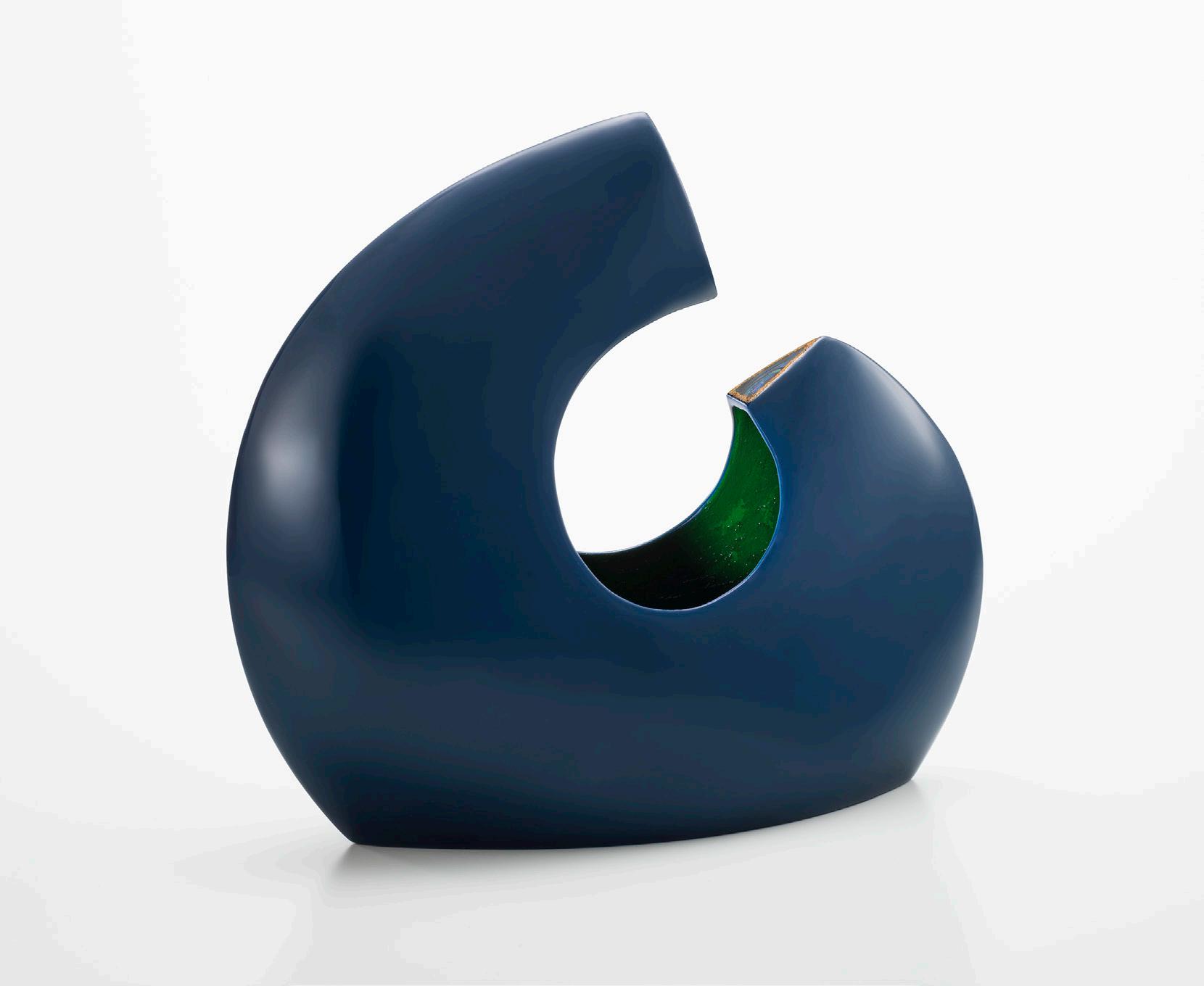
Wave Tip Night, 2021, 8 75 × 9 5 × 3.25 inches
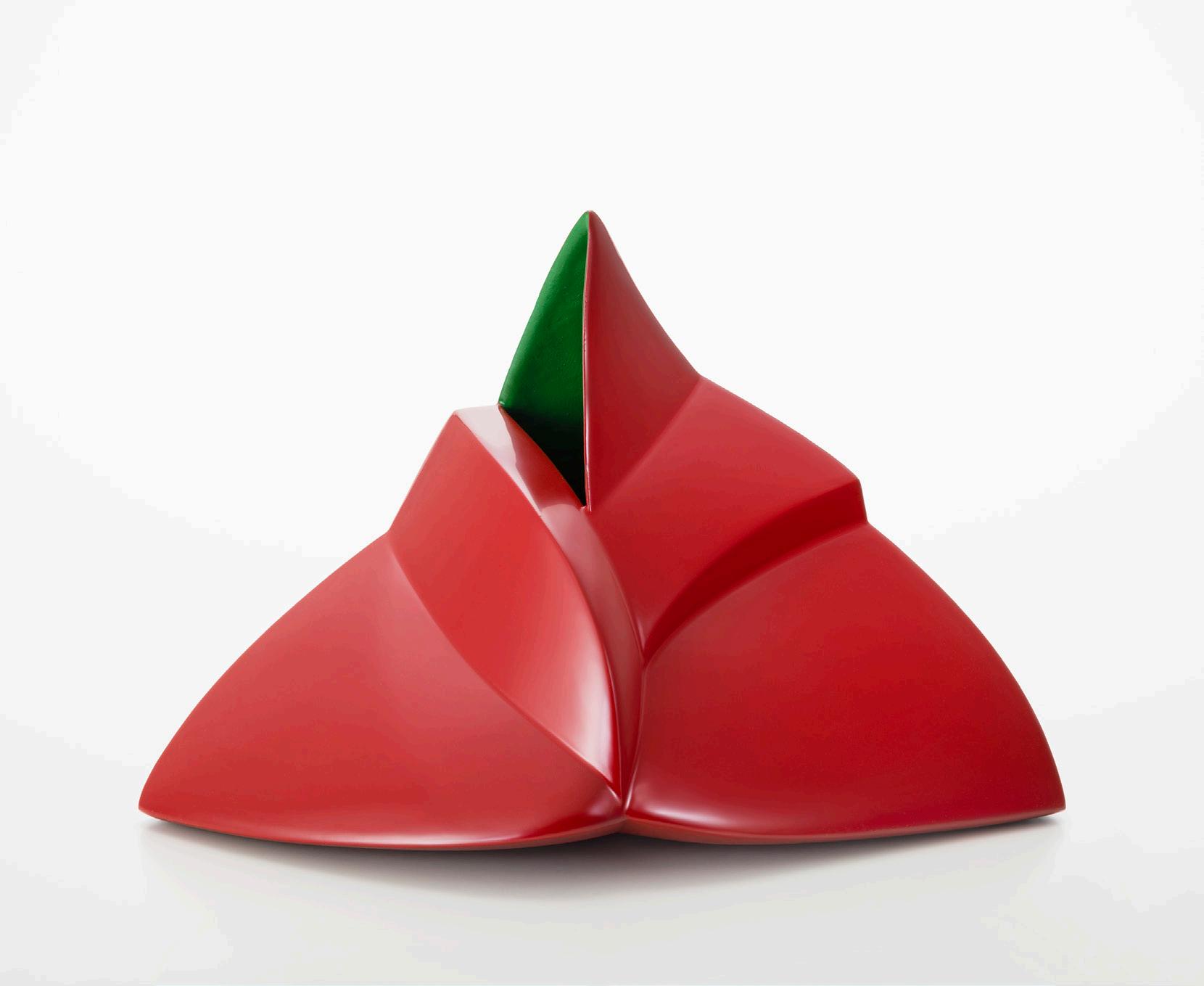
Kasane – Emimi , 2021, 7.25 × 10.75 × 5.5 inches
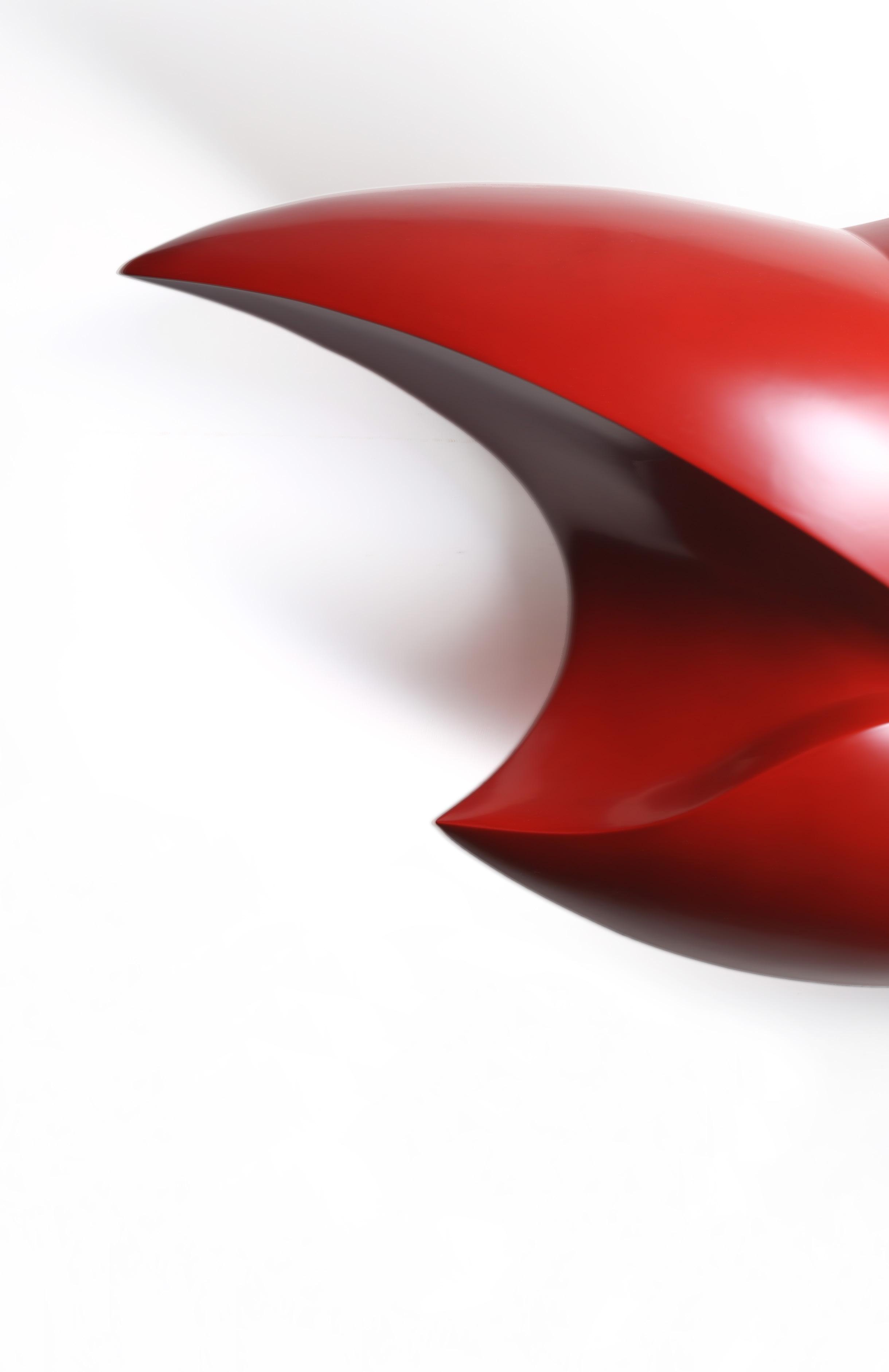
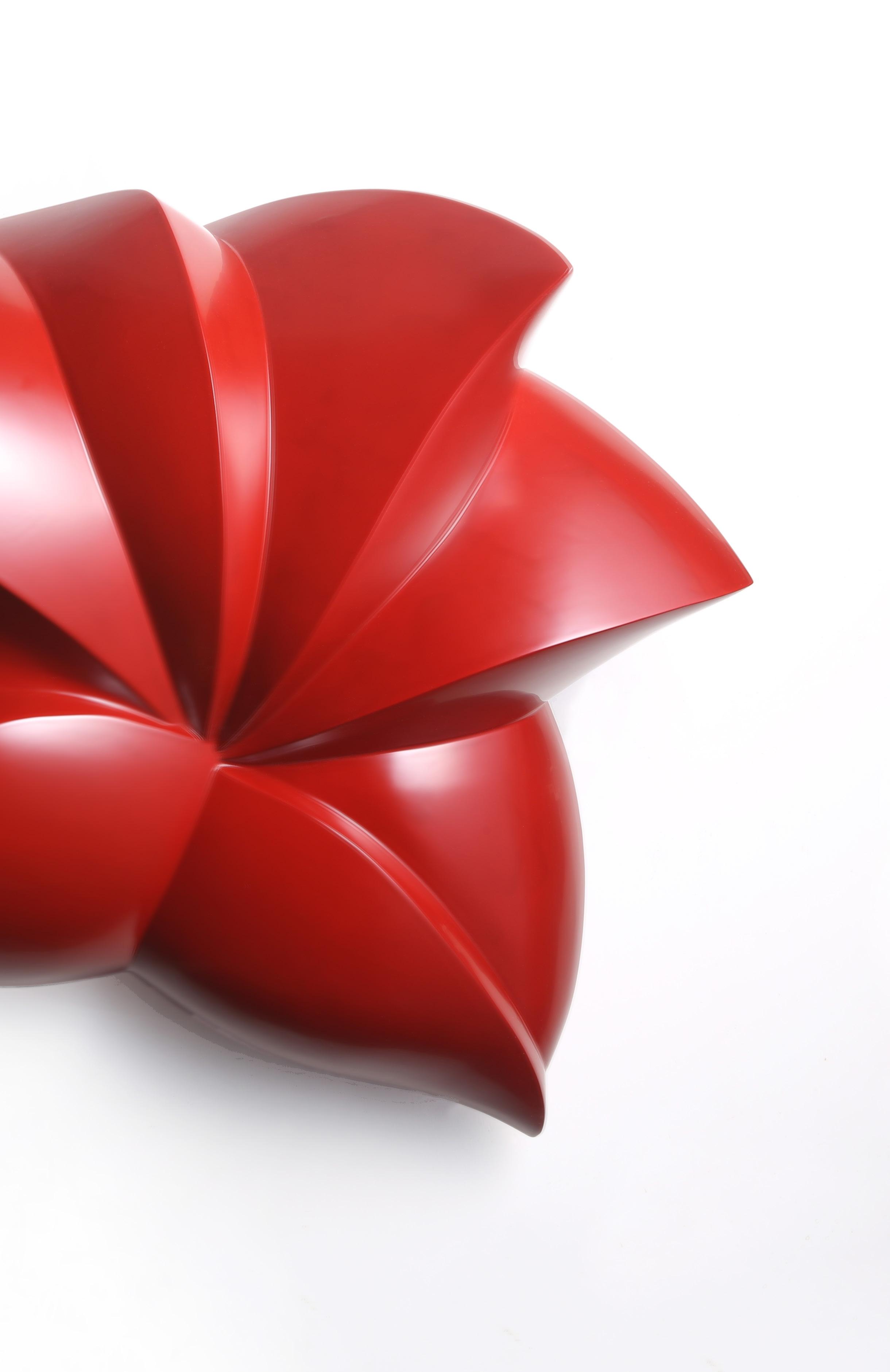
Starfish , 2018, 18.5 × 28 × 5 inches
32 The Moon , 2020, 17.5 × 14 × 3.75 inches
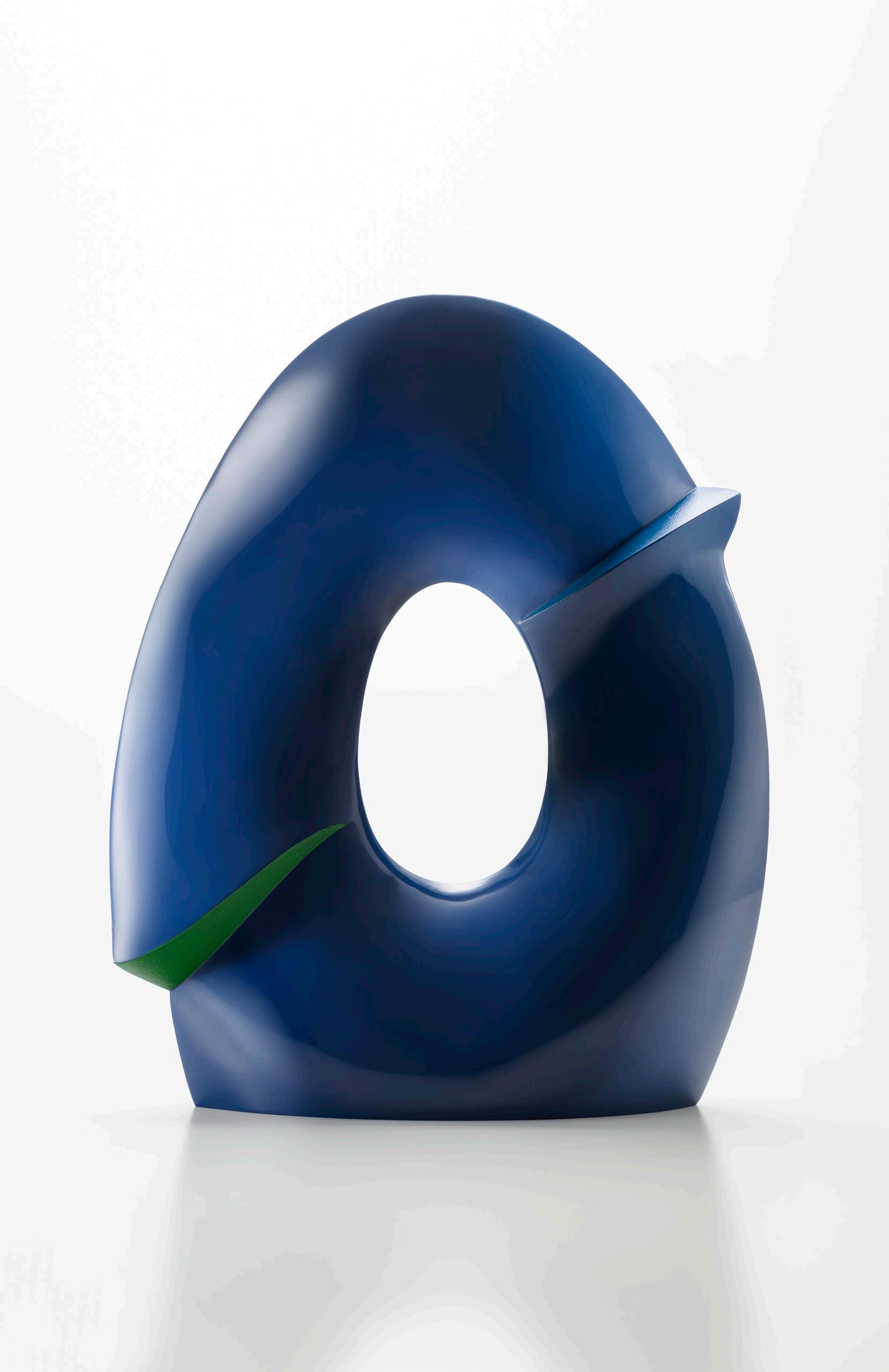
SASAI FUMIE
Born 1973, Osaka, Japan. Lives and works in Kyoto, Japan.
EDUCATION
Present Professor at Kyoto City University of Arts
2003 – 05 Artist in Residence, Chiang Mai University, Thailand
1998 MFA, Kyoto City University of Arts
1996 BFA, Kyoto City University of Arts
EXHIBITIONS + ACCOLADES
2025 75th Minister of Education, Culture, Sports, Science & Technology’s
Art Encouragement Prize for New Artists of Fine Arts
2024 Solo Exhibition, Takashimaya Art Gallery, Tokyo (traveled to Osaka & Kyoto)
2023 Kyoto Art & Culture Award Winners Exhibition, Museum of Kyoto
The Japanese Lacquer, Wajima Museum of Urushi Art, Ishikawa
Beyond Boundaries: A Tomorrow of Traditional Decorative Arts, Ginza Wako, Tokyo (also in 2018, 2014)
2022 Kyoto Art & Culture Award, Chushin Art Encouragement Foundation
2021 Japanese Modern Arts & Artists in Ibaraki , Museum of Modern Art, Ibaraki
2020 Japanese Lacquer 2020 , Kanazawa Yasue Gold Leaf Museum, Ishikawa
2019 Solo Exhibition, Takashimaya Art Gallery, Tokyo (traveled to Osaka & Kyoto)
2018 Japanese Lacquer Now, Nihonbashi Mitsukoshi Art Gallery, Tokyo
2017 Solo Exhibition, Galerie an der Pinakothek der Moderne, Munich, Germany
Designing Japan, Philadelphia Museum of Art, PA
Hard Bodies: Contemporary Japanese Lacquer Sculpture, Minneapolis Institute of Art, MN
Dry Lacquer Exhibition , Kanazawa Utatsuyama Kogei Kobo
2016 Craft Arts: Innovation of “Tradition & Avant - Garde,” & the Present Day , National Museum of Modern Art, Tokyo
Takashimaya Art Award Selected Artists Exhibition , Takashimaya Art Gallery, Tokyo
Beyond Boundaries: A Tomorrow of Traditional Decorative Arts , Takashimaya Art Gallery, Tokyo
2015 Takashimaya Art Award from the Takashimaya Charitable Trust
Encouragement Award, Kyoto Prefecture Cultural Prize
World of Lacquer & Ghosts, Wajima Museum of Urushi Art, Ishikawa
REVELATIONS , Grand Palais Paris, France
Solo Exhibition, Gion Konishi, Kyoto
Solo Exhibition, Galerie Mizen, Paris, France
2015 Collected Items , Museum of Modern Art, Ibaraki
Forms of Urushi, Gallery Sokyo, Kyoto
2014 Best Young Artist Award from the City of Kyoto
Urushi, Yakimono Gallery, Paris, France
2013 Solo Exhibition, Takashimaya Art Gallery, Tokyo (traveled to Osaka & Kanagawa)
Art of KOGEI , Spirit of Kyoto 2013 , Vietnam Fine Arts Museum, Hanoi
Wakaranai no Susume , The Museum of Modern Art, Ibaraki
2012 A Feast of Urushi & Uruwashi: Women Artists from Around the World Today , Kyoto City University of Arts Gallery (traveled to Tokyo & Fukushima)
2011 Flawless: Contemporary Japanese Lacquer, Cavin-Morris Gallery, NY, NY
Japanese Modern Arts & Artists in Ibaraki, Museum of Modern Art, Ibaraki
2010 Kyoto Art & Craft Art Biennale, Invited Artist, Museum of Kyoto
Solo Exhibition, Gallery Caption, Gifu
3rd International Lacquer Art Exhibition , Fujian Art Museum, China
2009 Solo Exhibition, Toyota Municipal Museum of Art, Aichi
Sasai Fumie × Tashima Etsuko: In the Flower Garden , Tsukuba Museum of Art, Ibaraki
Contemporary Japanese Lacquer , KEIKO Gallery, Boston, MA
Solo Exhibition, Gallery Keifu, Kyoto
2008 30th Anniversary Award, Kyoto Art & Craft Artists Association Exhibition
2006 The Child , Toyota Municipal Museum of Art, Aichi
Solo Exhibition, Gion Konishi, Kyoto
Solo Exhibition, Silver Shell Kyobashi, Tokyo
2005 Solo Exhibition, The Japan Foundation, Bangkok, Thailand
2004 Solo Exhibition, The Japan Foundation, Bangkok, Thailand
2003 Solo Exhibition, Chiang Mai University Art Museum, Thailand
1999 Solo Exhibition, Tokyo International Forum, Tokyo
PUBLIC COLLECTIONS
National Crafts Museum, Ishikawa
Toyota Municipal Museum of Art, Aichi
Museum of Modern Art, Ibaraki
Takashimaya Historical Museum, Osaka
Kanazawa Utatsuyama Kogei Kobo
Chushin Art Museum, Kyoto
Ise Cultural Foundation
Abiko Kannon Temple, Osaka Museum of Fine Arts Boston, MA
Minneapolis Institute of Arts, MN
Philadelphia Museum of Art, PA
Musee Guimet, Paris, France
Victoria & Albert Museum, UK
